The road to Mandalay was a nightmare. It was 18,000 kyat for 2 people to ride on the Pyi Awe Tay bus-- which meant you got a (presumably) nice coach seat on a half-sized bus. What we didn't know was that these buses also pick up locals on the way. In fact, there are seats attached to the side that fold out so that folks can sit in the center aisle. Those are the seats sold to the locals. There's more standing room by the door, so a lot more folks piled in over there. So while my pretty tall 6ft 2in friend had no leg room, it was a cramped and hot journey (we were pretty spoiled on the ride over on JJ's from Yangon to Bagan). Oh, and it was a super bumpy journey (friends on other buses told us that locals couldn't handle the ride either and got very carsick).
|
Roads. Roads! Roads. Bagan taught me that roads here are basically cow paths and mostly dirt and unsigned even when they're nicely written out on maps (although most free maps in Asia are shitty) (Highly recommend bringing in a good road map like what I got from Kinokuniya before you get here). The road to Mandalay was a nightmare. It was 18,000 kyat for 2 people to ride on the Pyi Awe Tay bus-- which meant you got a (presumably) nice coach seat on a half-sized bus. What we didn't know was that these buses also pick up locals on the way. In fact, there are seats attached to the side that fold out so that folks can sit in the center aisle. Those are the seats sold to the locals. There's more standing room by the door, so a lot more folks piled in over there. So while my pretty tall 6ft 2in friend had no leg room, it was a cramped and hot journey (we were pretty spoiled on the ride over on JJ's from Yangon to Bagan). Oh, and it was a super bumpy journey (friends on other buses told us that locals couldn't handle the ride either and got very carsick). However we did see a lot of countryside-- shepherds herding goats, rings of palm trees around rice paddies... It reminded me oddly enough, of the drive from LA to Vegas, or maybe Palm Desert. I could totally see them putting golf courses here too, in the future.... Stopped at random places on the way to Mandalay (one was a crappy bus depot and another was like a sort of restaurant across from a gas station). Was pretty hungry at this point (regretted my decision to not buy more Tim Tams when I had the chance) and tried some packaged foods that the lady was selling (obviously made earlier that day). There was a fried cracker made from chickpeas (mostly flavorless-- it was alright) and a fried doughnut with what looked like shredded old coconut (but it tasted odd-- though I saw the same stuff drying in Mandalay in the sun so maybe that's what coconut tastes like once fermented?). Side note: I didn't realize until this trip that one of my very first favorite jazz standards (that I listened to on my dad's Count Basie CD because it was the disk that had the only recording of "All of Me" which happened to be my middle school jazz band's audition piece in 7th grade) was based on the Rudyard Kipling poem, "Road to Mandalay." Bagan: temples, temples, temples. The only time you don't see them is when there's stuff blocking your way, like trees or buildings. But otherwise, this is a flat area covered in remnants of an 11th-Century empire. I now understand why no one travels overland between these countries. Even though roads are nicely marked on maps (including my beautiful map from Kinokuniya that has been a lifesaver) everything is dirt in the countryside, and has no road signs. That dirt turns into mud when it rains. We had the unfortunate luck (or fortunate, because it was a lot cooler than usual) of being in Myanmar just as the cyclone passed over our heads. Mud. It wasn't quite as bad as when we were all in Phong Nha (for that I say if you really are a die-hard minimalist shoe wearer like me, then get a shoe that has real traction because sneakers with smooth soles (though I love my Lems shoes) really suck when it comes to mud). We weren't really able to ride bikes with all the mud and the rain (5000 kyat for a day) so we hired the hotel car (their taxi) to drive us around for the day (which if I recall, was about 30,000 kyat for the half day). Although we couldn't see much out the windows (thanks to the annoying shade-dot-logo things), it did mean that we could hunker down and hide in air conditioning (and get eaten by mosquitoes). We asked our waiter at Zfreeti Hotel (who had great English for only learning for one year in Yangon) about some recommendations for places to visit. I will say that one of the temples he pointed out was phenomenal. In some sense we made the mistake of going there first (beautiful area, carved/built into the cliff, has underground tunnels that are sort of blocked by the sand but they do lead to the other major temples in the area) and it was so cool because we had the place all to ourselves. Now that would probably be a pretty sweet archaeological dig to lead. We visited the village that our friendly waiter pointed out (it's sort of behind the large cylindrical viewing tower)-- my friends said it wasn't quite as bad as the village they visited in Sapa, but there were a couple of things I found obnoxious. First off, no Burmese person up to that point had ever to my face told me, "I want to sell something to you." Additionally the tour was mostly a quick walk through the village, to the guide's house, and then to the various shops they had that sold goods they supposedly made, like handcrafted silver, carved horn utensils, and woven cotton bags. I understand that these people would like to just live off of the money that tourists give them (and I understand that they are poor people) but asking one person in the group for a "money present" instead of assuming you'd tip or even just being happy you visited and bought some goods-- I thought that was a little unusually rude for the Burmese people. What my friends and I were hoping for was an authentic village where we could observe how they lived, maybe chat and talk or enjoy a cup of tea, not just be walked through and then told to buy things. I guess maybe I set us up for that when an old lady smoking a cigar came out after me and I took a picture of her and she demanded money and I gave her some (and her daughter who was carrying her baby asked too). I had seen similar things happen in Vietnam but I guess I feel that although these people may need money for better living conditions, me giving money directly won't exactly impact or change their lifestyle for the better (for all I know I could have been giving the old lady money to buy more cigars). Food: Be Kind to Animals / The Moon-- great tea, so-so food. Maybe I felt disappointed (after all it was rated #1 on Trip Advisor) or the fact that I'm a hard-core meat person, but nothing here felt really satisfying. Weathervane-- Super Western with decent Burmese food. The first place I've eaten Tea Salad at (quite tasty with whatever crunchy/roasted bean they put inside). Their curry was also yummy (didn't burn like the Shan curries) and a lot thicker than what we had previously seen at most other Burmese places. If you want a burger (my friends said both burgers were good) and a selection of pretty decent desserts, and you're craving good western food, not a bad place to come. Where to stay: In general if you come during low season you can stay wherever you want. New Bagan (to me and my friends) didn't seem interesting (though the older folks we met who were easily in their 40s/50s liked it) and we preferred our accomodation in Nyaung Oo. Unless you really want to spend time learning about Lacquerware, or want to eat at a local tea house, I can't see why you would want to be in New Bagan. Zfreeti: Not the best hotel ever (spotty wifi, kind of old rooms) but it does have a swimming pool, spa, nice E-bikes to rent, and all of their staff who might have to interact with customers speak decent English. Crown Prince Hotel: Things I liked: Wifi (best I've had the whole trip), Good selection of TV channels (oddly the satellite/international news and stuff only kicked in at night), and great in-room air conditioning. Things I didn't like: Restaurant (stuffy and slow food-- seemed like 1 guy took your orders and cooked in the back), and honestly I don't know how well these folks are doing because the manager came out and asked me to write a good review for them. As far as I could tell they didn't have any E-bikes to rent, and it felt a ways away from everything that was sort of "going on." Temples I thought were interesting: Shwesandaw (sunrise/sunset temple--though you won't see those when it's rainy) Ananda (one of the largest temples) Upalithein Unesco mural one
Ok so my uncle was afraid that I wouldn't like Yangon, but I did. There was so much to be seen on the street, from fresh seafood I've never seen in my life to rickshaws and folks wrapped in longyis (Lohn-gees). Locals lived their lives on the street here way more than any other place I've been in Southeast Asia.
Compared to Hanoi the air was cleaner (perhaps due to the rain) and more people spoke English (and better English than most of the folks I talked to in Vietnam). The buildings were a little run-down, but there was a lot of colonial-era architecture that was still up, in addition to weird fusion buildings and old shop houses.
I did go to visit the Shwedagon Pagoda which is comprised of many many temples and has buddhas and shrines to the different days of the week (you pray to the day of the week that you were born on), and has the largest bell in Myanmar (which the British attempted to steal but it capsized the ship and sank to the bottom of the river and had to be lifted out by a makeshift raft by the locals). Spectacular.
(Hint, if you want a good view head to the rooftop bar called Vista Bar)
Loved the street markets around 19th street-- on Maha Bandula and 19th there was food, and Anawratha Road and 19th had lots of recycled hardware and tools. Tried a bunch of foods and didn't get sick so I highly recommend you do the same if you go! Just be wary of uncooked (the ice cream/popsicle thing I had didn't give me any issues).
19th and Maha Bandula for amazing food (cooked and raw)Or go to Anawratha if you want to see a lot of toolsSuggested Walk for Architecture
Around the Sule Pagoda, you can walk by the oddly decorated City Hall, and the old Court building. Unfortunately we didn't get to go down to the Strand hotel or walk Strand road to find the other old colonial buildings. If I went back I'd do that and go on the circle train around the city.
Bogyoke (Bow-geok) Market: Pretty amazing place if you want to buy longyis, jade, cane balls, and fruit all in one stop.
Alibaba Amusement Center: Stumbled upon this entirely by accident-- it's the Yangon equivalent to Chuck-e-Cheese. No pictures allowed inside, though (for whatever reason) so I snapped a shot on the way out. Definitely seems like a good place to spend some time on a rainy day. Located somewhere on 25th Street north of Maha Bandula.
Places to Stay
We met up with our friends from Vietnam who stayed in Pickled Tea Hostel (we stayed at Royal 74 Hotel, which I lived in a windowless shoebox of a room and the provided breakfast was fairly greasy and only somewhat good). If I did go again I'd probably stay at a hostel instead (you meet people). We met a lot of good folks through our friends and it was a good few days in Yangon. Do note that there are calls to prayer early in the morning in these places, which was pretty noticeable by my friends at Pickled Tea.
Where to eat (if you need a restaurant)
Shan Yoe Yar -- clean, great service, and affordable. If you like spicy food, then you'll love Shan food. It was so good we ate there twice!
Thank goodness, or else that would have been one nightmare of a day.
It's pretty straightforward-- if you got an online visa, just proceed to the immigration desk with the forms given on the plane and you should just go through. There are plenty of banks and ATMs who will change money with you (the rate was 1 USD = 1240 Kyat (pronounced chot)). Yes the rate was somewhat better in the city (1 USD = 1242 Kyat) but in general it was a lot easier to change at the airport-- just make sure you bring fairly crisp large bills ($50 or $100). From there, you can just go to the taxi booth and reserve a taxi (though you may want to get a SIM card at the booths further down first). Do you need a SIM card? I thought so, but after getting one it wasn't very helpful-- even with 3G it was hard to find my location on my smartphone with Google maps. (Though it was only 1500 Kyat.) Sadly the 3G/2G connection I had was actually better than the wifi at the hotel I stayed in! Getting in was no problem. Other than making sure I had a ticket out of Vietnam before my visa expired, the check in process at Changi (Singapore) was painless. Danang and Ho Chi Minh, on the other hand, were just awful. (Arguably getting into Hanoi was painful because of the Visa on Arrival process, which although it was faster because I brought a filled-out Visa Application form with me, still required like a 30 min+ wait-- but otherwise quite easy to get through Hanoi.)
Danang was running late by the time we got there, and they kept letting the folks that needed to board ASAP through the line. Ultimately that meant that I was standing at the front of the queue for about 25 minutes (it might have been longer). The line didn't end there-- there were only 2 X-ray machines for the whole airport. Ugh. Ho Chi Minh's line wasn't too bad, however, for Vietnam Airlines you queue in front of the booth instead of having one line that feeds to multiple booths. After much waiting (because they also needed to verify my visa to Myanmar), I finally got my boarding pass, and then I assumed it would be smooth sailing. Alas, the immigration queue was not much better. Again the same system-- each line only fed into the booth it was in front of. Worse yet, families in a rush tended to cut the queue (they didn't realize how long it actually was) and so a few of us had to keep telling folks to go behind (a "perk" to being close to that area for a long time). More waiting to get through security (only 2 X-ray machines for each half of the terminal-- so 4 X-ray machines total). Once through, we rushed to find some breakfast and our gate. In short, these airports seem fairly new, and no one has really engineered the system to be efficient. They've definitely got enough staff and enough space.... Just be sure you're early (or really maybe being late is better if they actually bring you to the front of the queue). Utter chaos. If you follow my route during a drier season or are going around the same time (July) then here are the changes I'd make:
Vietnam doesn't need an amuseument park-- Hoi An's Old Town is a major attraction! It's a mixture of old buildings with lots of character, a clothing or bag store almost everywhere you look, and a ton of tourists (really, it felt a lot like walking through Epcot and could be the place with the highest concentration of white tourists in all of Vietnam). There's even 1950s music that gets played over the loudspeakers in the evening, and a lantern celebration takes place every evening! And if that isn't enough for you, there are Vietnamese cultural lessons (language and cooking), music performances, and more for you to "immerse" yourself in. If you're expecting "real" Vietnam, walk a few blocks outside of Old Hoi An. Additionally you can go to Cham Island or the neighboring countryside area (aka. Marble Mountains) or perhaps a less-tourist focused city (Danang). However if you just think of Old Hoi An as its own thing (like an Asian Epcot) then it's quite enjoyable. We bumped into a family we had met in Phong Nha and they were saying that it was a pleasant city to be in because of the pedestrian walkways and they didn't have to constantly worry about their children walking around (here sidewalks are sidewalks, as opposed to scooter parking, as in Hanoi). Lots of great buildings and temples, but after a while you kind of wish there was more to the buildings than just a plaque and a bunch of tourists all crowded around (especially annoying with those selfie sticks). Food in Hoi AnThey're famous for certain things, particularly a noodle (cua lua? it looked like not-so-soupy udon) and chicken rice (Com ga). Frankly I guess I must love Singapore's Hainanese Chicken rice (or maybe it's that chicken skin) too much because the shredded Hoi An chicken white meat just wasn't doing it for me. The other dish that I've always wanted to try (but it's hard to find and I always assumed it was an omelet) was banh xeo, a fried rice pancake with shrimp and pork and beansprouts that gets rolled with a rice wrapper and lettuce and some papaya salad. It's quite good (even if it is pretty oily). Places I approve of (I'll put pictures of the rest of the food up eventually): Morning Glory/Mrs. Vu's Market/any of those restaurants-- has great food from all parts of Vietnam (very very tasty and authentic) Streets/Streets Too which is a pretty good restaurant that takes in orphans and trains them to work in a restaurant-- they force all the local workers to speak English to each other all the time so that they become fluent enough to be able to work at any other restaurant or resort catering to foreigners. Bale Well isn't bad-- I think we could have sprung for the chicken rice instead (Joe thought that he didn't need to try the Hoi An Chicken Rice since he's already had Singapore's version). The locals ordered it and it looked really good (though they did make a pretty good version of banh xeo). An ok-decent restaurant. Didn't really find many restaurants in the area where the locals went (and I wasn't sure how good the street food was in terms of cleanliness so I actually didn't have a banh mi off the street or try their deep fried shrimp pancake). The one place I found was a bit out of the way (north of Tran Hung Dao about a block west of Lao Cai) there seemed to be a place where a lot of locals were eating (I think it was close to the ride-a-Vespa-through-Vietnam tour agency). How to get hereInitially I read that folks would charge $20 (400,000-500,000 Dong) for a taxi to go from Danang train station to Hoi An. These folks stopped me on the way out and had me at 300,000 for a minibus ride-- and then convinced us to go on the back of their bikes (they had Danang Easy Riders on it-- which is sort of a group of folks who guide you around Vietnam on a motorbike). He stopped for coffee and tried to convince us to ride out to the countryside (Ho Chi Minh Trail, Marble Mountains, etc) but I was pretty tired of seeing the same scenery and really wanted to spend time at the beach and so after briefly stopping at a tailor, the Easy Riders dropped us off at our hotel and drove away. Getting Clothes MadeAdmittedly I was skeptical about getting anything made (Louisa's previous experience wasn't very good and she didn't recommend it). Our motorcycle drivers were obviously getting a commission from Tuong's (located @ 67 Trần Hưng Đạo). However after some bartering (I didn't get super local prices but all things considered, it was great service throughout the fitting process). You need to come back for a minimum of three fittings, and they had actually messed up my order (I wanted 1 shirt to be sort of a round neck blouse instead of a button-down, and had asked for non-skinny legged suit pants) but they actually made the shirt for me for free to apologize for their mistake, and kept re-doing the pants until I was happy with them (the tailor even came out to see how the clothes fit me each time I came by for my fitting). They packed my new clothes for me, cleaned up the stitching where I requested, and gave free water and wet wipes every time we came through. Overall pretty impressed with the efficiency and the quality, and now I have some custom silk shirts!
This is how most of us got here-- through the homestay program run by Vanessa Weiss. Or at least, that's how we signed up. Getting here on the other hand turned out to be a challenge. First we had to figure out where the Public Ferry dock was-- which when we got there, a bunch of locals were getting off with their motorbike (hence we assumed we were in the right spot) and the boat driver said it would cost 50,000 dong to get to Cham Island. However he then proceeded to drive to a large double-decker wooden ferry boat that was loaded with the locals and various foods like live ducks, and that boat captain demanded 150,000 dong (locals pay about 40,000 dong). It took over 2 hours to get to the main island (you have to go to Bai Lang Harbor first) and the seas were a bit rough (we were definitely pitching a lot). We then reached Bai Lang where luckily, our hostess was waiting, but we weren't allowed to get off the still pitching boat (harbor tides were quite strong) and after watching her run around (she was looking for another family she was supposed to pick up), she told us to get onto the smaller boat tied up next to the ferry. Once we were all loaded, a few men proceeded to load a huge freezer onto the roof of the tiny boat (I was quite afraid that we were going to capsize at some point), and then off we went to the fishing village located about 15 mins away (and it cost 30,000 dong to ride that little boat one way). I had no idea it was a UNESCO site, until I saw the faded sign.... That afternoon, after eating lunch and taking a short nap, our host, Day, took us out on his fishing boat to a nearby island for some amazing snorkeling. It was a reef that seemed affected by acidification, but overall was much healthier than what I saw in Cancun. There were giant sea urchins that were easily the size of large pomelo fruits-- and their spikes made them the size of beach balls (it was a little terrifying). There were lots of parrot fish and little schools of fish-- it was a pretty diverse ecosystem. I even saw some giant (like 1.5ft wide) blue starfish! (Sorry folks, no pics because I didn't end up bringing my S90 with me on this trip and wasn't about to risk my GX7 on open water.) Totally worth it-- we were only sharing the whole reef area with a few other island guests for an hour in the water. The only downside was how deep the water was (had to wear a life jacket-- the depth made me doubt my swimming abilities), and the amount of jellyfish near the boat (they hurt). I was a little freaked out when I jumped into the water and looked down. Boy was it deep. It was kind of hard to choose between looking down into the coral reef or looking up towards the beautiful shore of the little island. Communication was hard, but the food was excellent.They were all really nice-- only one man was somewhat fluent in English, and he was Lau of the Lau Homestay at Bai Huong harbor. We stumbled across one girl close to the village library (my gut tells me the library has books for the tourists that go to the island) who (like everyone else on the island) thought I was Vietnamese and proceeded to talk to me (all because I said hello back in Vietnamese). She was very animated and I think she was basically saying welcome to our island-- you can observe our grand temple over here, our hardworking army boys over here, and oh don't go past that gate because that's the military base. There's probably lots I didn't catch but I was really hoping that she'd magically switch to English at some point....
Fun fact about the island-- in spite of housing an active military base, it only has electricity sporadically throughout the day and from 6-10pm each evening. Also most folks seem to still cook in outdoor kitchens, and the wealthier villagers have fridges and indoor portable stove units. As one of my Oxalis guides, Tang, was recommending me to take the sleeper bus from Dong Hoi to Hoi An, I was trying to recall why exactly I had booked a day train ticket (that required us to leave Phong Nha at 6:20AM). After some checking of the train schedule I remembered it was because of Seat 61's recommendation to see the route from Hue to Danang during the day, saying that it was one of the most scenic train routes in all of Vietnam (admittedly I thought the same when we cruised through one of the stops prior to Dong Hoi a few hours south of Ninh Binh). Unbelievably clear blue water and pristine beaches.... The only odd thing about the journey was as we approached Hue, loud blaring music came on, and I was thinking, "Wow, so Vietnamese trains blast music like how folks say Myanmar buses do?" But then it turned into a really pleasant announcement in English about the historical capital of Hue and how it was a UNESCO site. Some folks we met actually recommended Hue and said that it was less touristy than Hoi An. Next time, I suppose, I'll have to come back for a seafood-themed trip. (Apparently Danang itself has a lot of great seafood places.) Is the train's food safe? I think so!Ok, so maybe I won't eat the steamed corn because the lady de husks it with her hands and doesn't clean them between handling money and touching the corn. And maybe I didn't try the rice porridge (they tend to ignore folks who are obviously not Vietnamese-- and I was too slow every time I saw the porridge pass by). However, on the way south there was a nice lunch cart that pulled through. Handy tip: If you want food, there is actually a lady who passes by and sells lunch/meal tickets, but don't freak out if you don't buy one-- the helpful cart people will gladly tell you the price (30,000 Dong) and won't deny you lunch just because the meal ticket lady ignored you. It wasn't bad-- soy chicken with cooked veggies, rice, and soup. My point is, there are good and cheap options, and the folks who serve those who ride the train surprisingly don't jack up the prices for foreigners (seriously even the stalls at the Danang train station were selling lots of food and drinks for cheap).
Probably best known for Son Doong, the world's largest cave, thanks to the photoshoot in National Geographic, this Karst mountain region is now fairly well known. The whole area is remote and about an hour'drive from Dong Hoi, which is a major train stop between Danang and Hue. Interestingly enough, all the towns here are practicing Catholics-- the place is full of churches. I could have sworn I saw an Asian-looking version of Madonna and Child..... interesting facts about the area:
Exploring Hang En (Swallow Cave)-- the 3rd largest cave in the worldAfter some gross camping experiences in New Hampshire a couple of years ago, I was pretty hesitant to go camping again, but overall I had a great time on this 14 mi round trip trek. The whole trek was full of pretty incredible stuff, like the minority village people to the beautiful mountain scenery and of course, the Hang En cave itself. Words and pictures can barely describe how large the place is. It's got great acoustic properties-- imagine my delight when the cave reverberated with my sneeze! Apparently someone brought their banjo at one point and it was a great performance so if you feel up to trekking with an instrument, this could be a cool venue. If you're interested in taking photos (like I am) then most of the time you'll find that since almost everyone on these treks carries a camera of sorts, the guides are quite good at telling you where to take photos, will take photos of you for you, and will help organize the other folks on the trip to do some "light painting" for long exposures. We've traveled with 2 different companies on this trip, Phong Nha Discovery and Oxalis-- and I can tell you that Oxalis takes very very good care of its customers and ensures that they have great guides who are fluent in English. If you're coming here to go to Son Doong, Hang En, or Tu Lan-- look them up. If you're looking for the standard tourist trap caves (which are impressively lit up and I quite enjoyed because of the various formations they had), then you can either go yourself through the Phong Nha Ke Bang visitor center, or just go with a tour that your hotel/homestay/hostel can easily arrange. If you're considering going there (and you don't camp often, like me), you might want to be prepared for what's ahead:
The Warmup Act to Hang En Phong Nha Cave-- must get here by loud motorized boat (that gets paddled through later on)Paradise Cave: Like Jurassic Park minus the dinosaurs (probably because of the golf cart ride from the gate to the carved staircase up the mountain to the entrance of the cave)Beauty of the surrounding areaGood Food Exists!
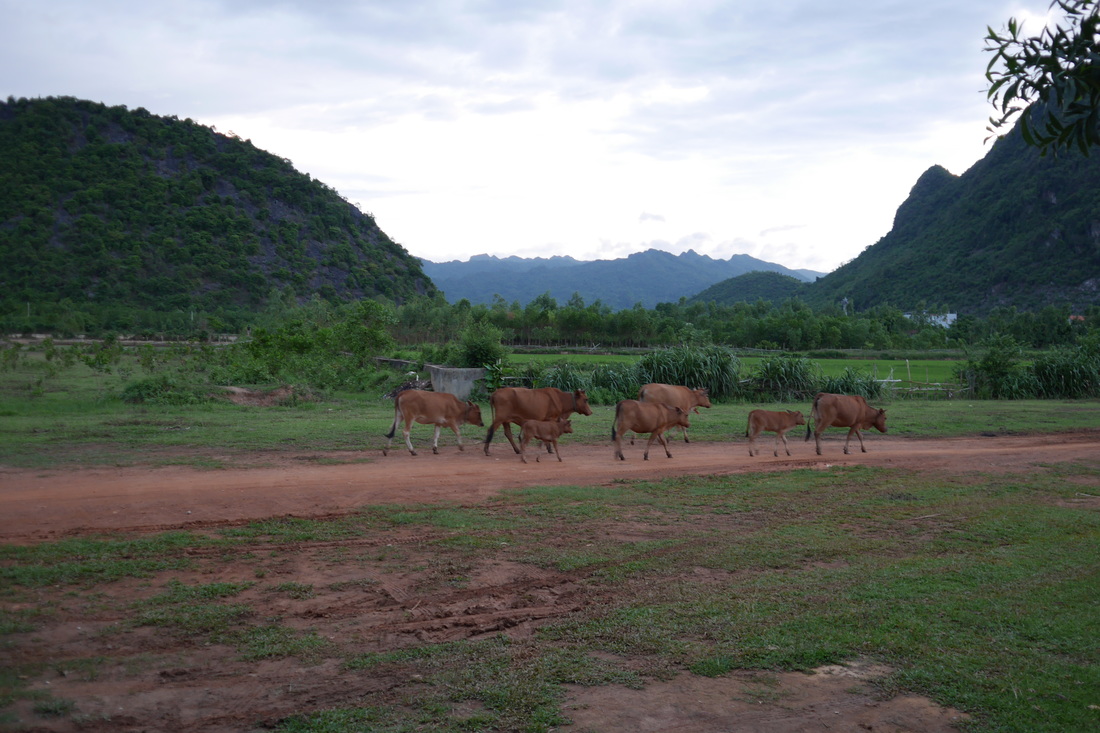 The view I'm paying for, haha. No but in all seriousness, Jungle Boss Homestay was excellent, even though our host, Dzung, couldn't be there (his wife had just given birth to his 2nd child when we arrived). He leads a tour to the old part of the Ho Chi Minh Trail and does a whole history + jungle survival lesson and I bet gives an interesting perspective of the war itself. |
Adela WeeTraveling the world since 1994. Taking notes about the places I've been so that friends and family can go there too! Archives
January 2016
Categories
All
|
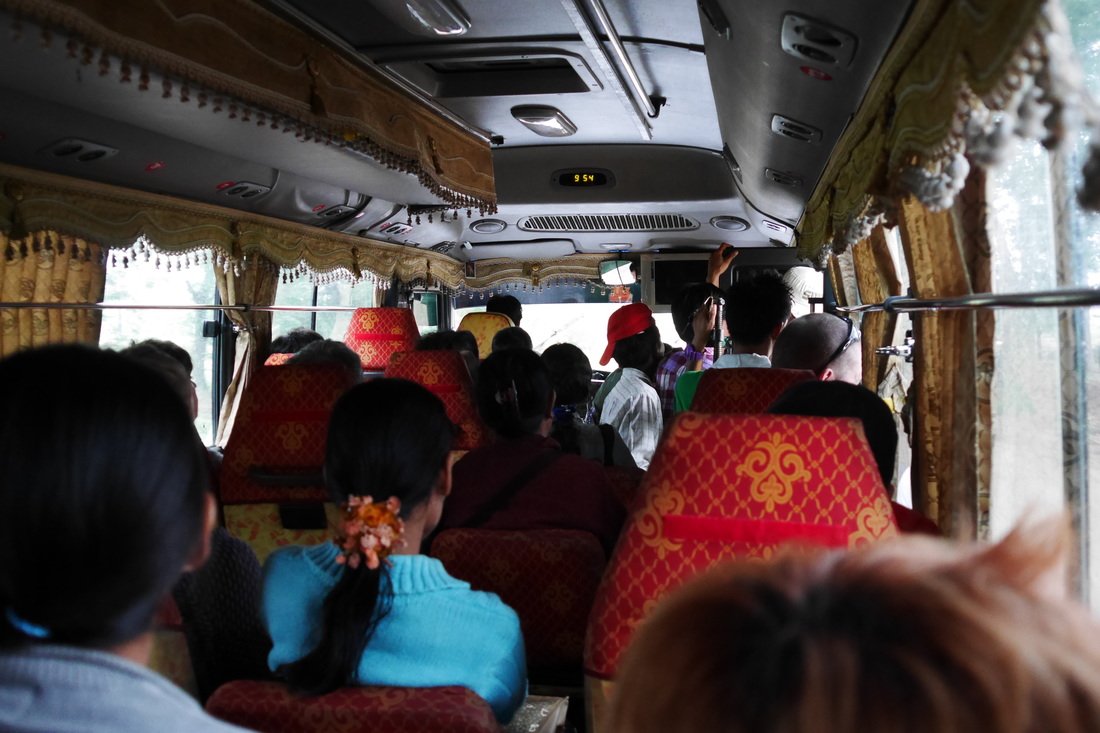
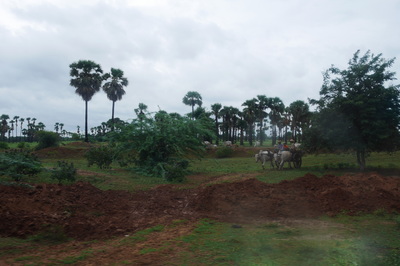
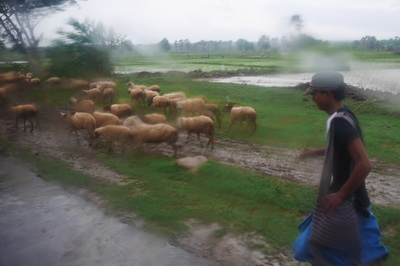
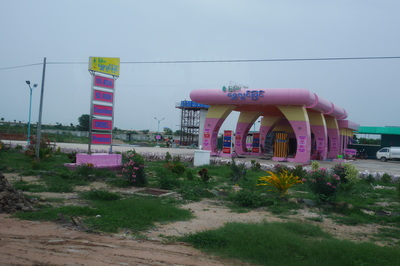
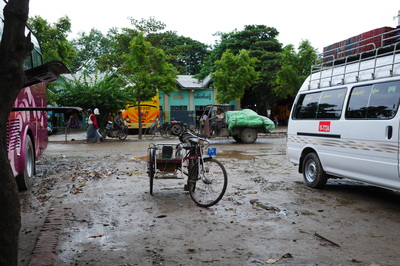
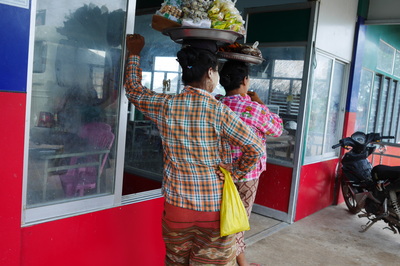
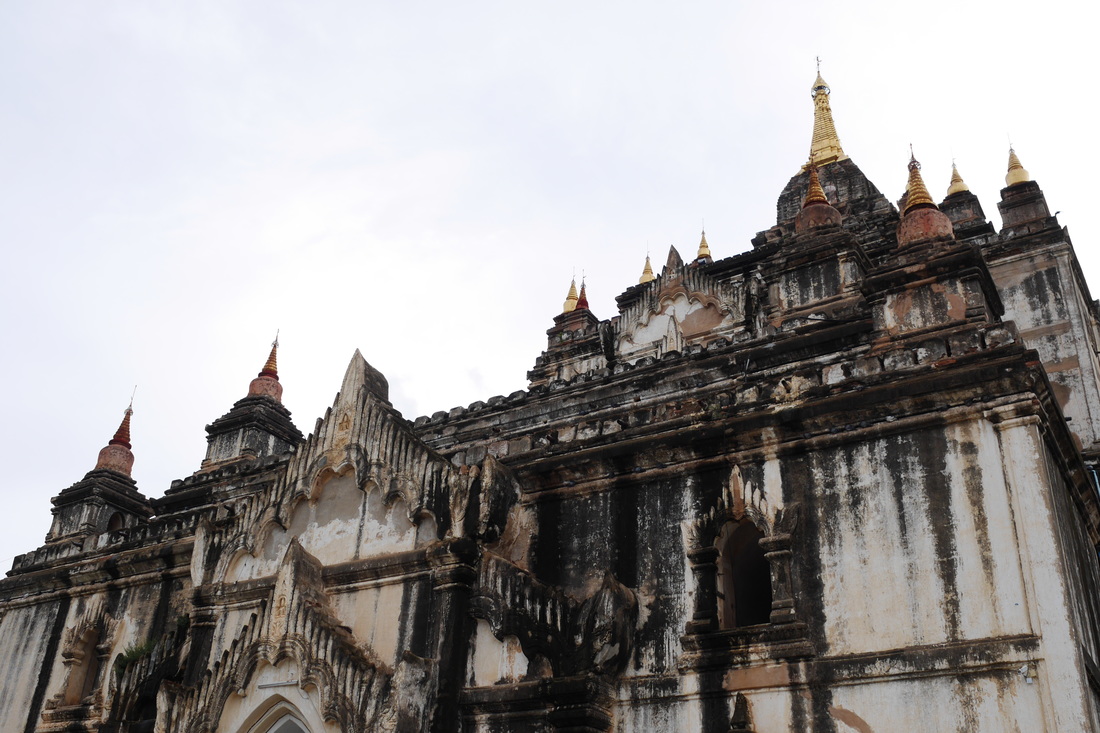
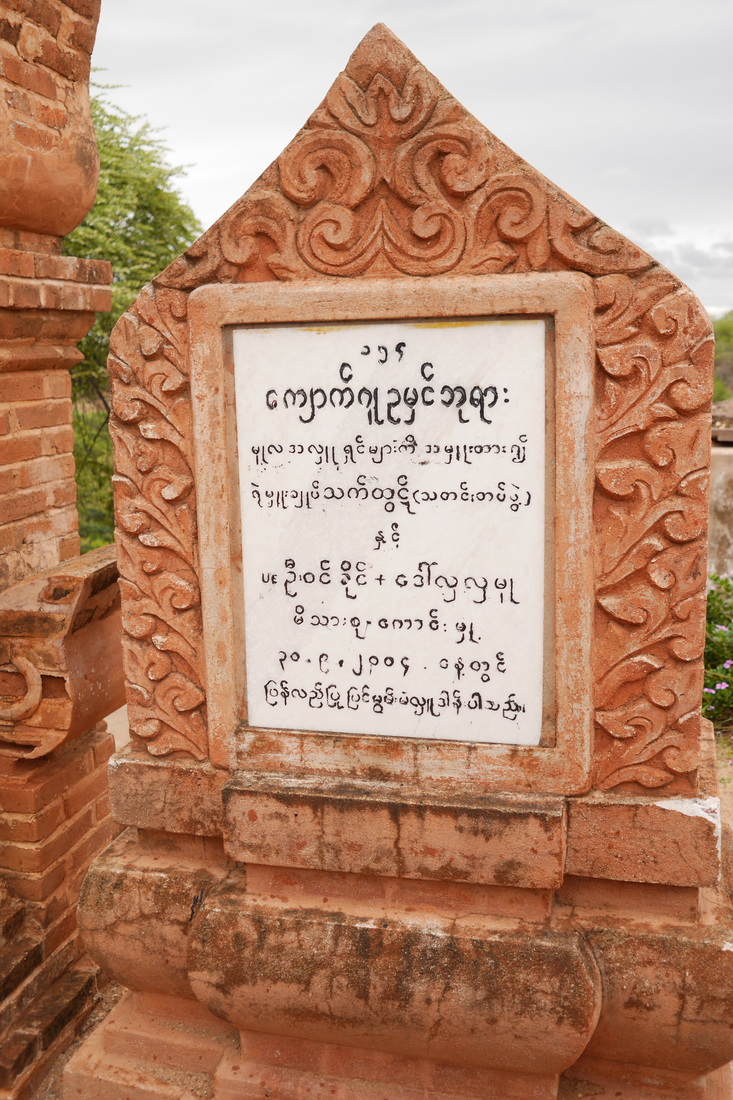
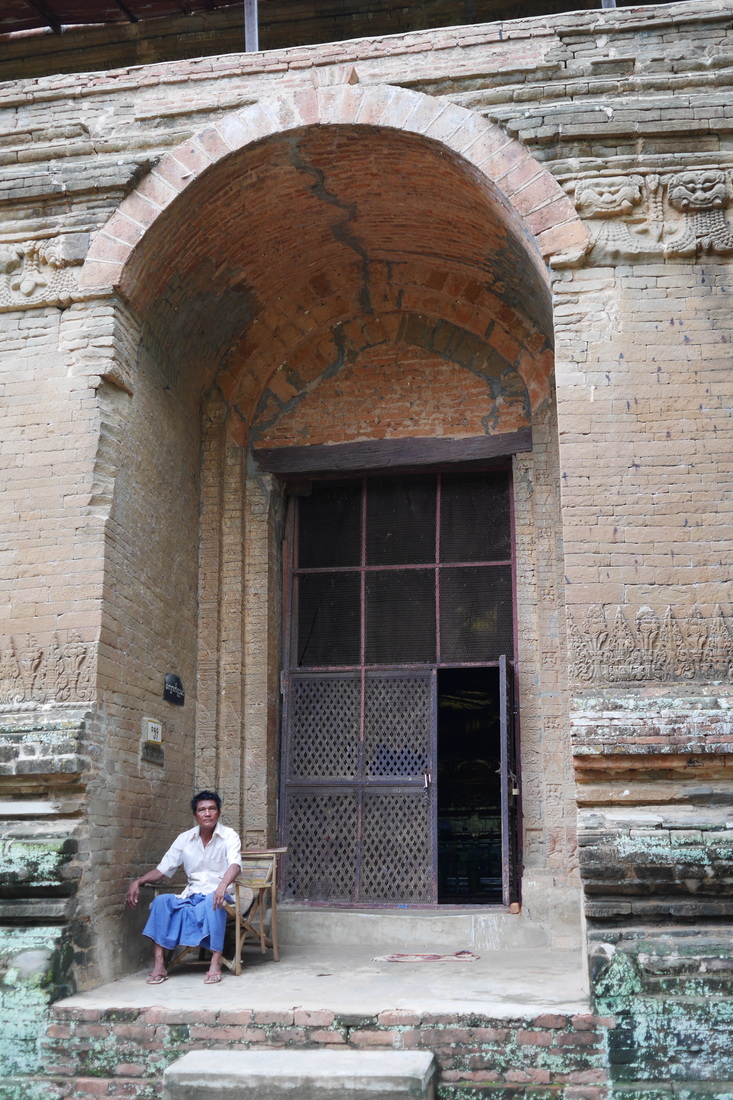
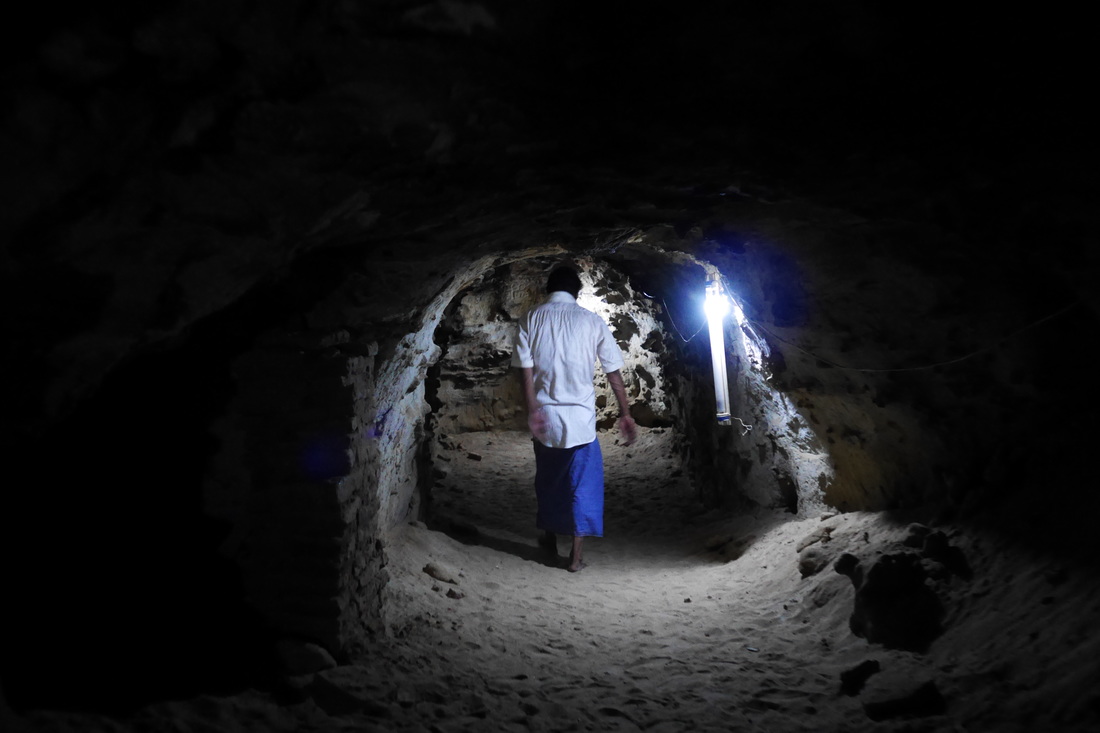
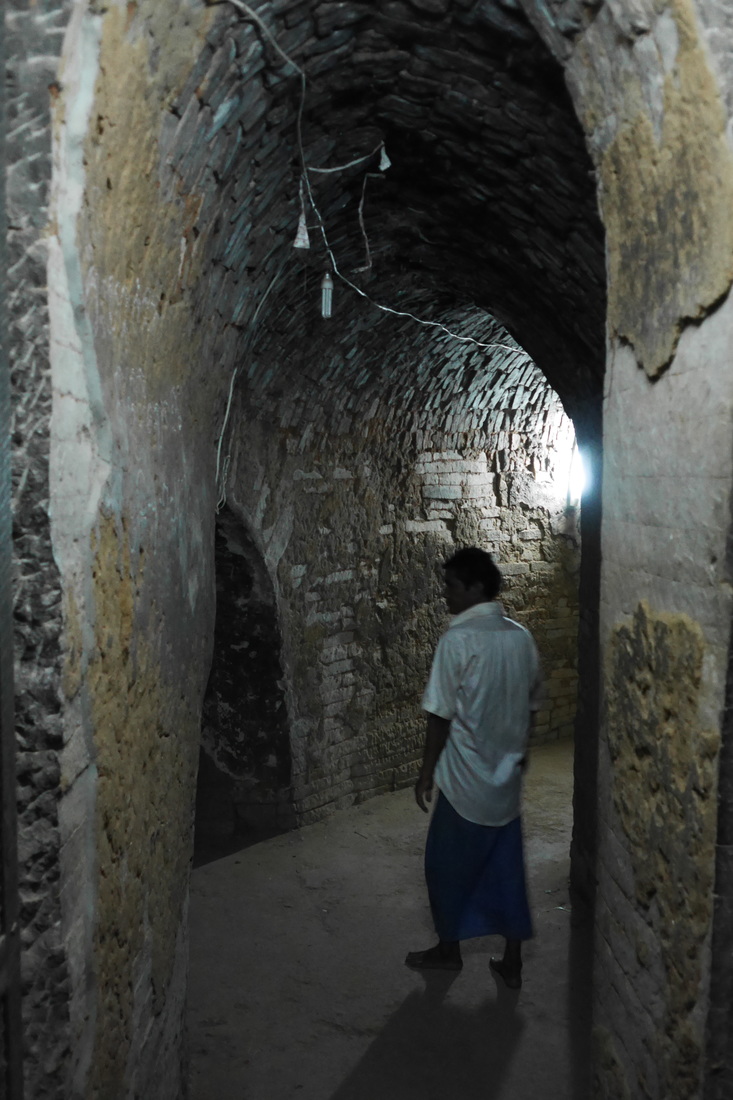
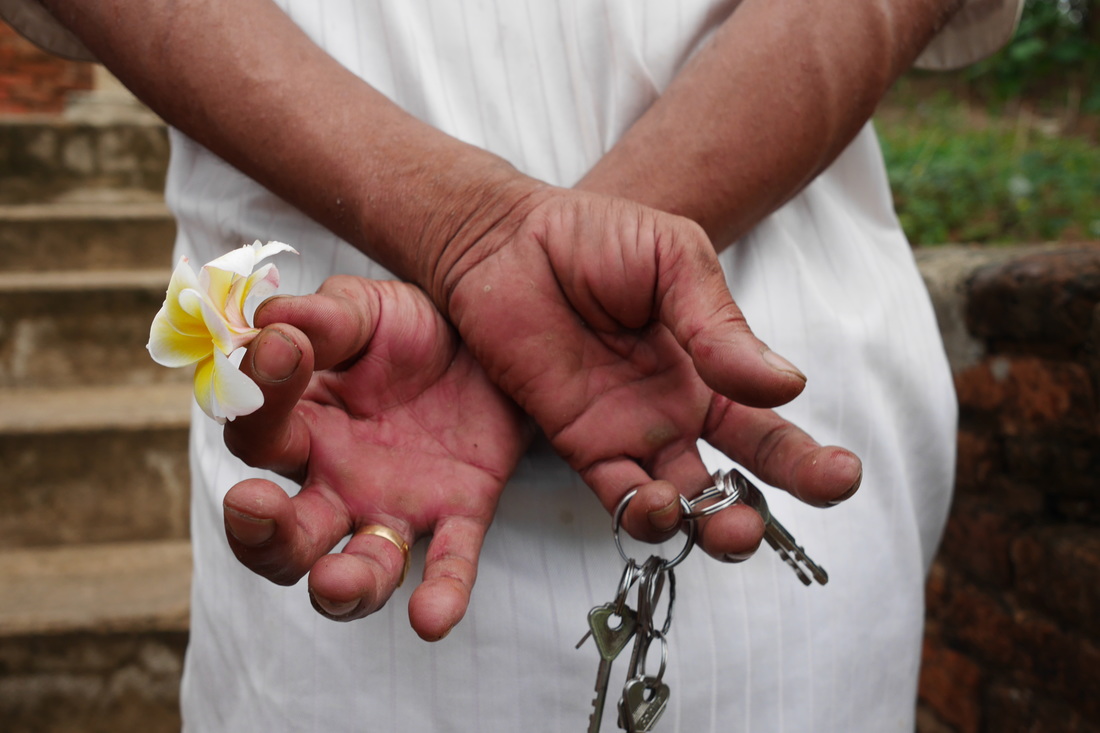
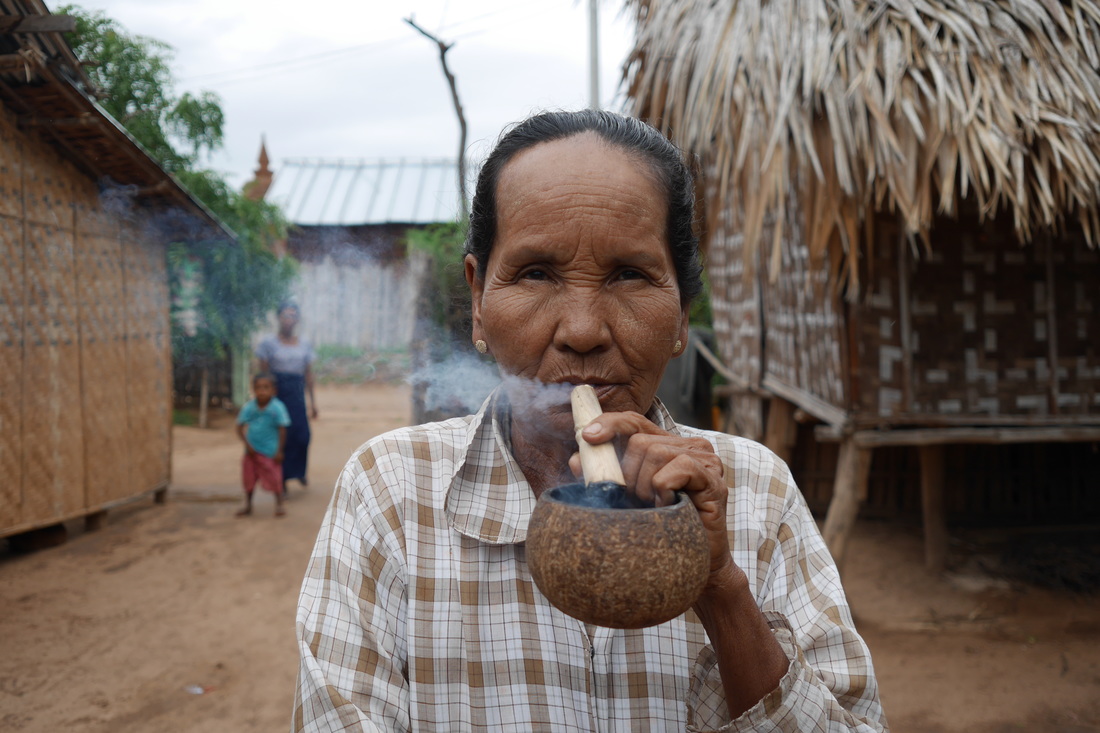
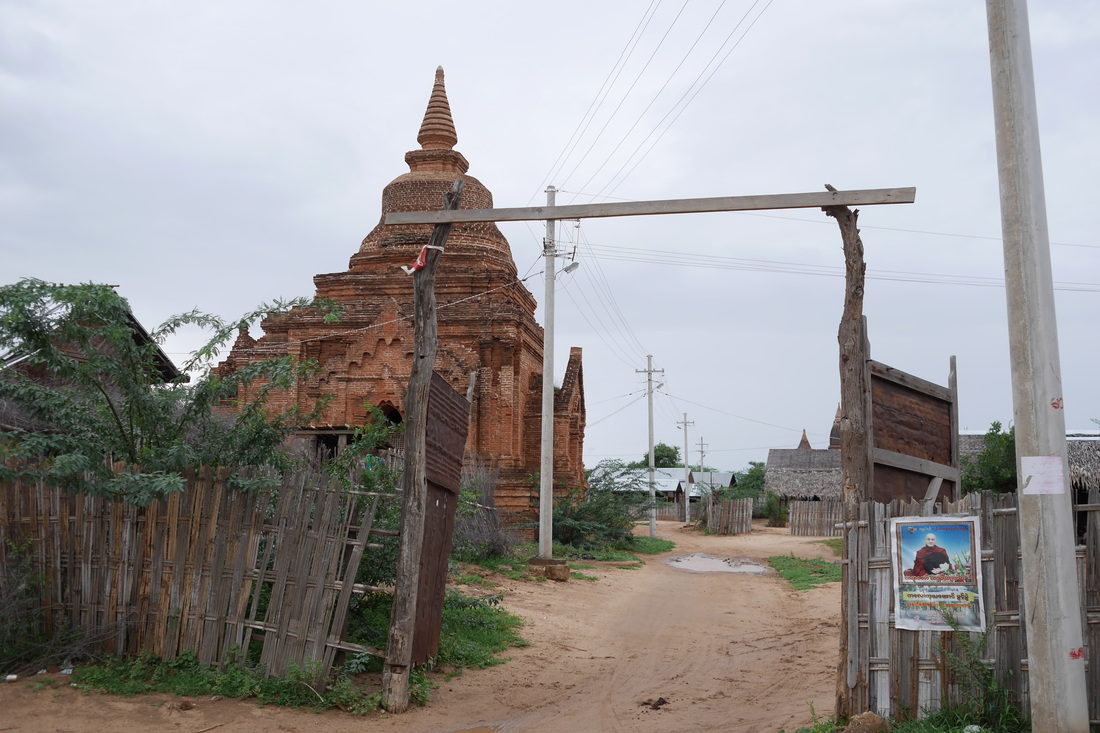
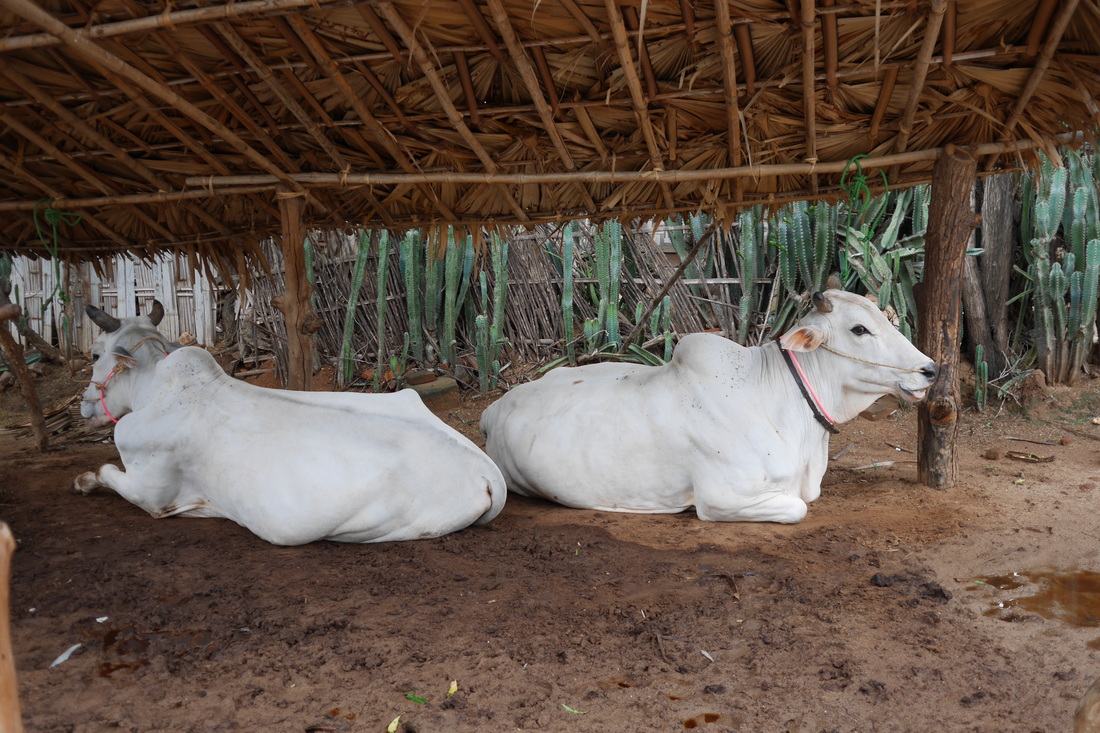
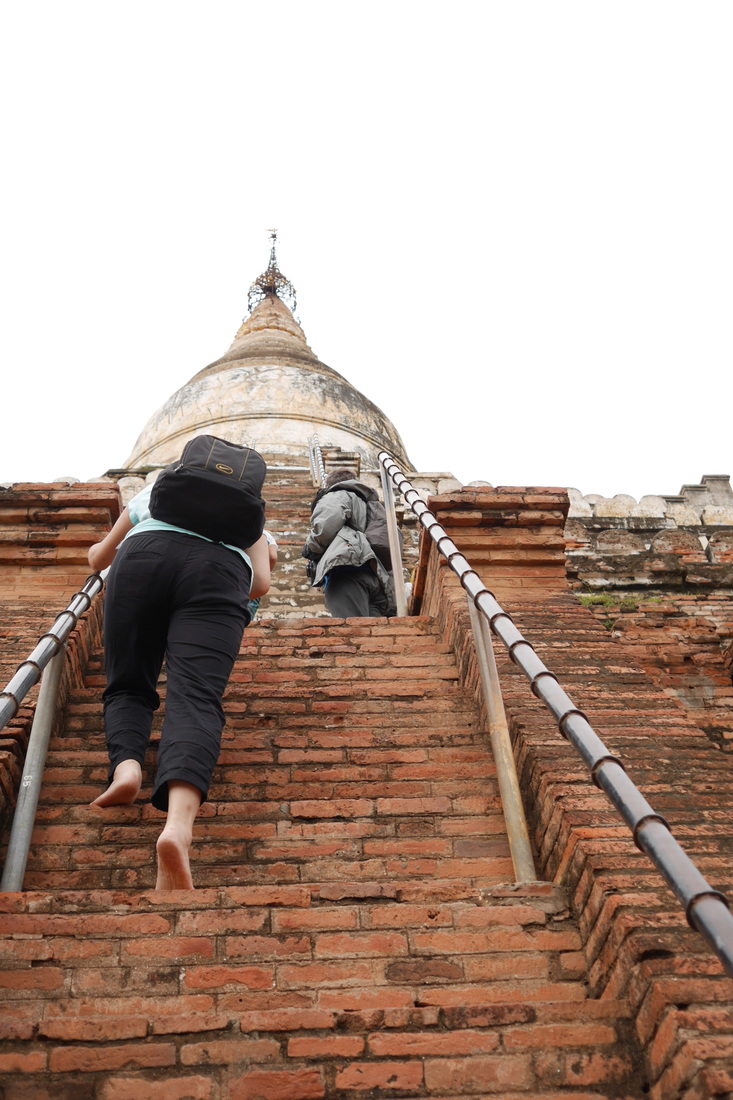
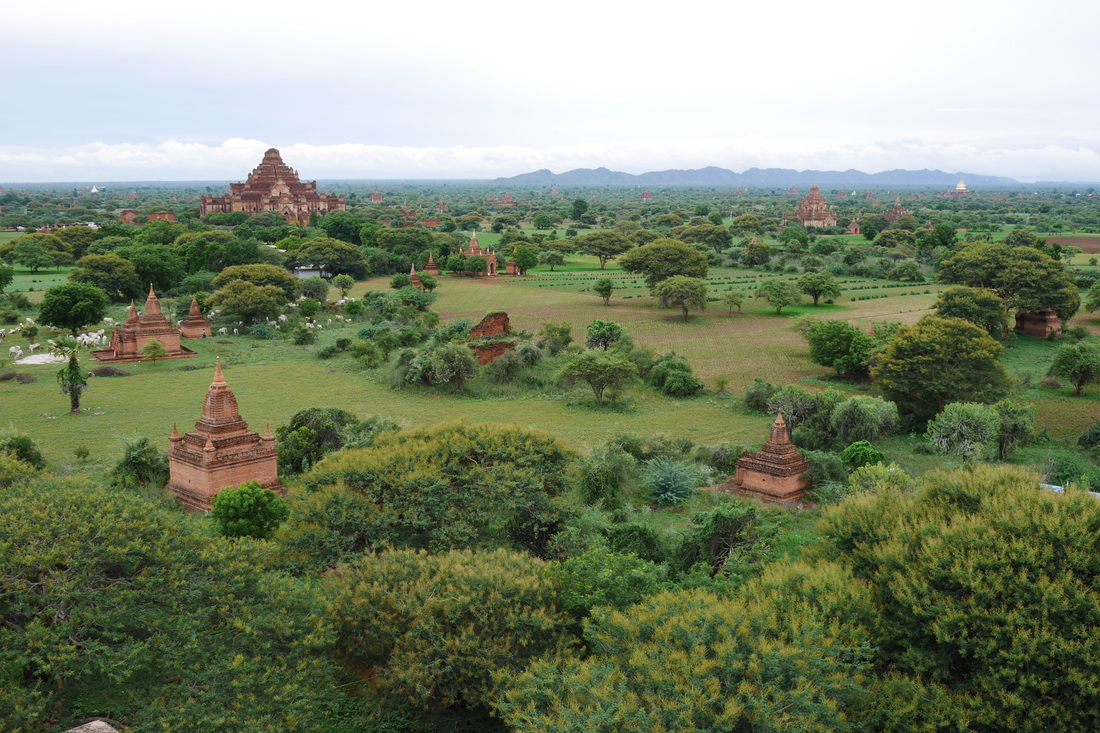
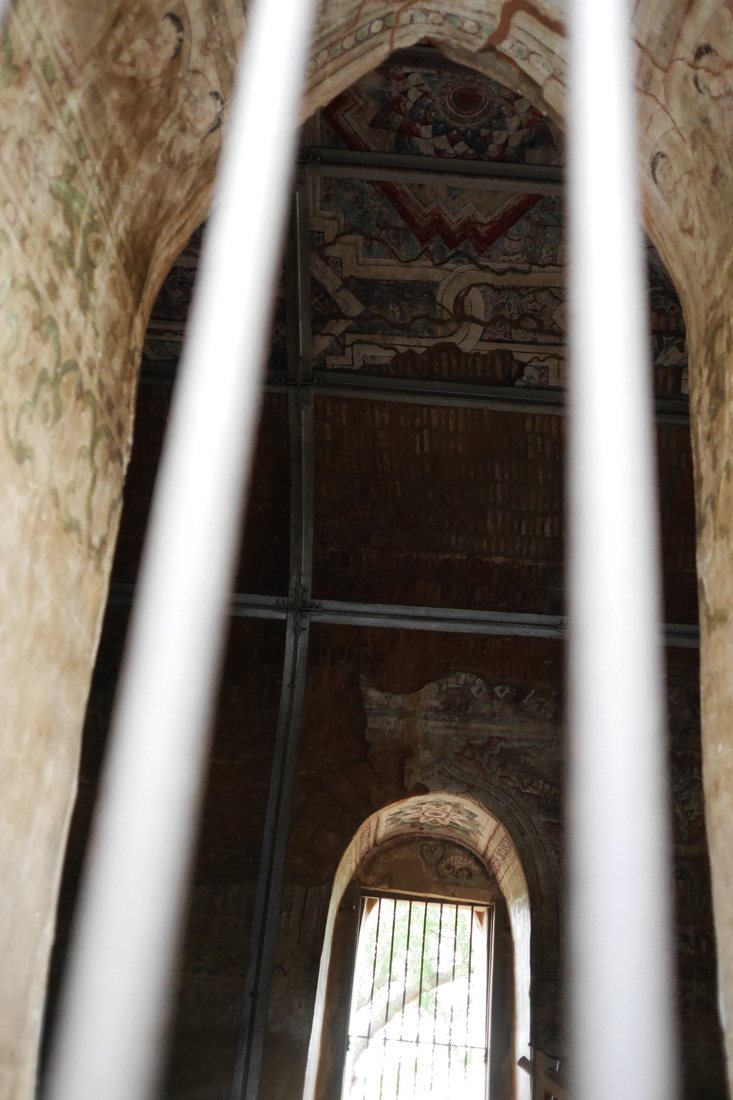
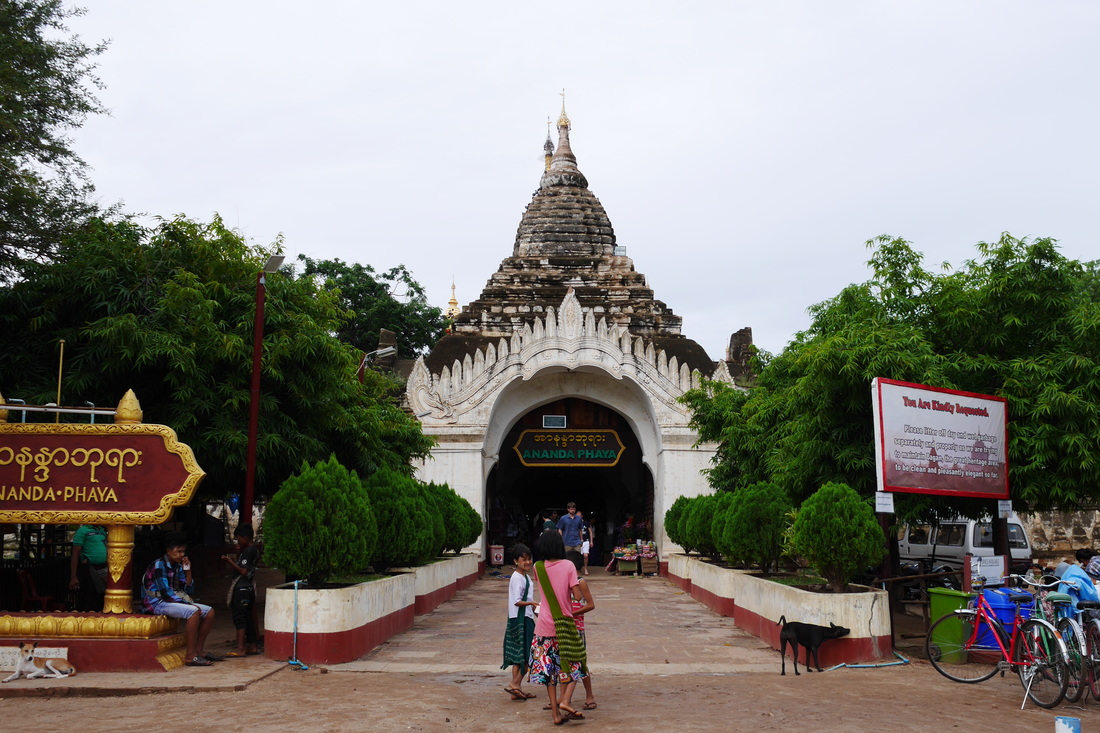

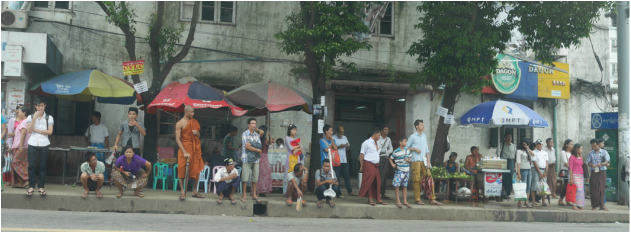

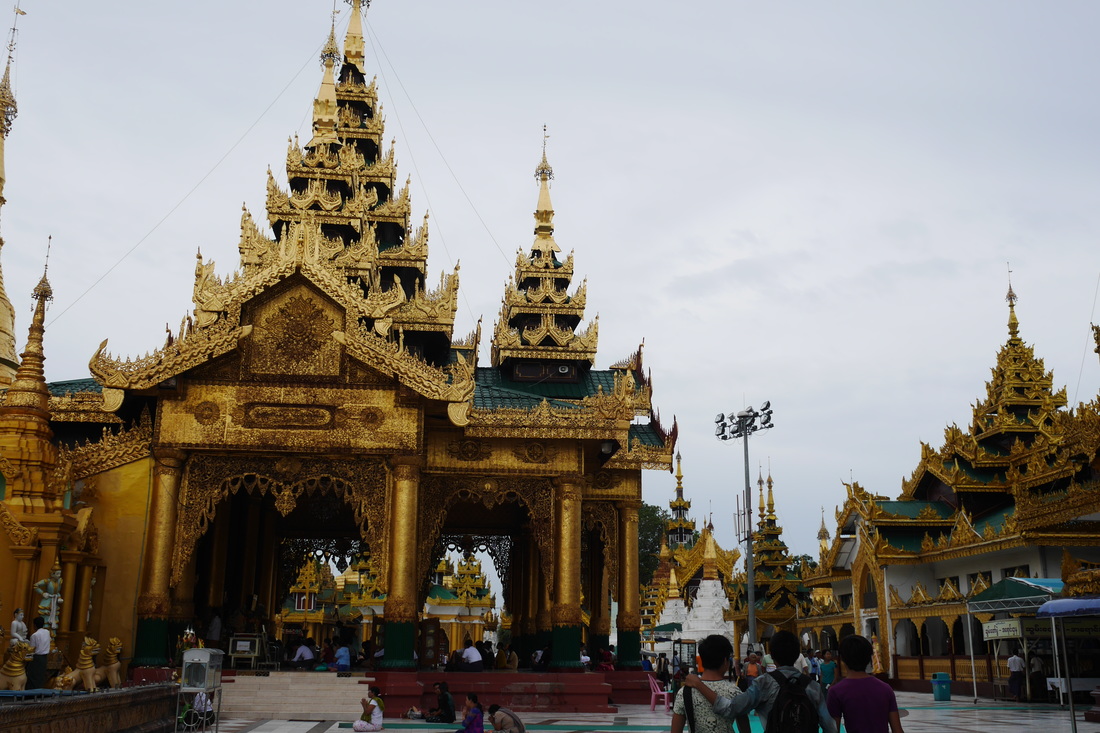
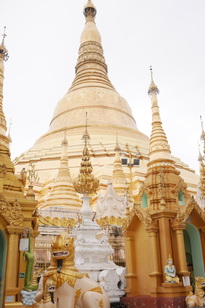
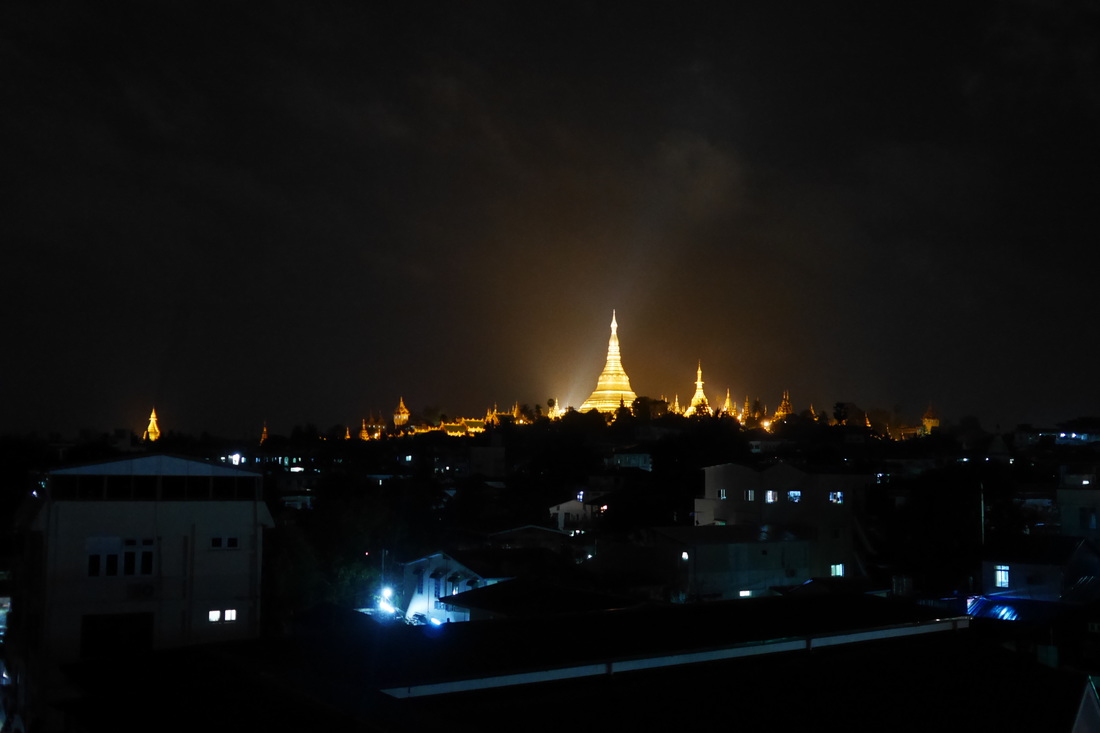
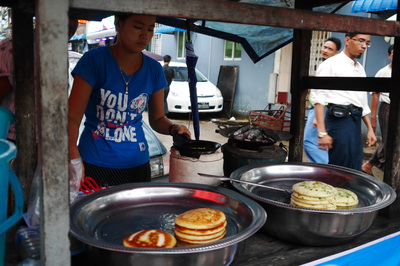
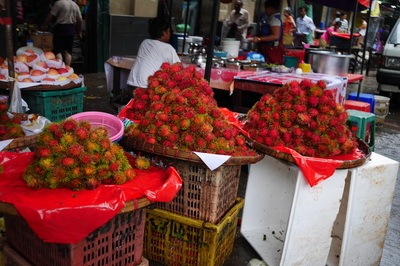
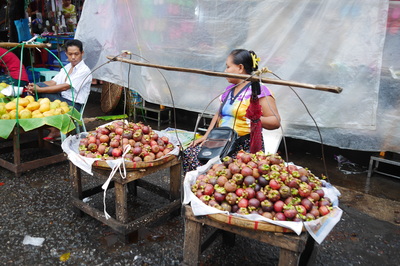
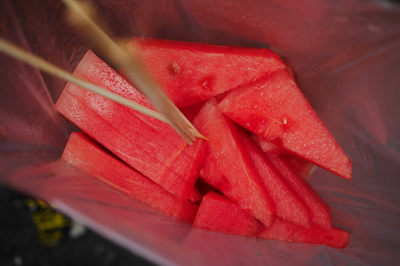
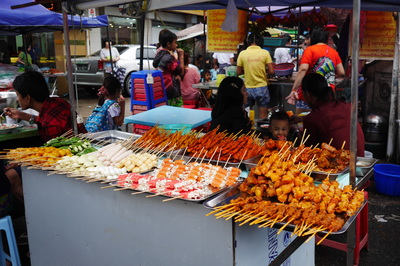
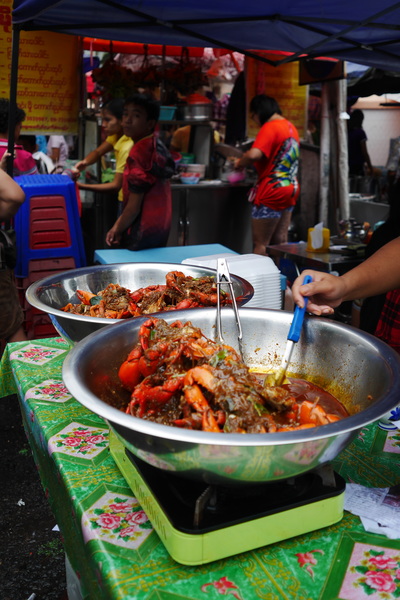

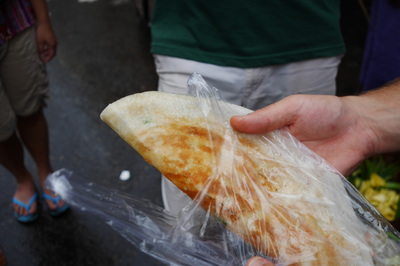
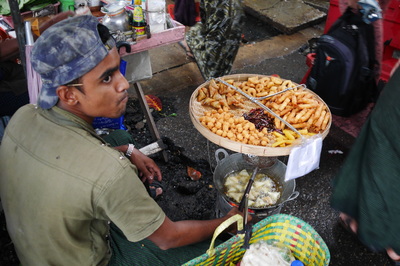
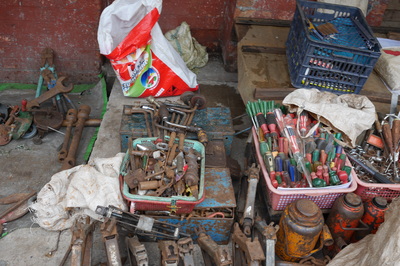
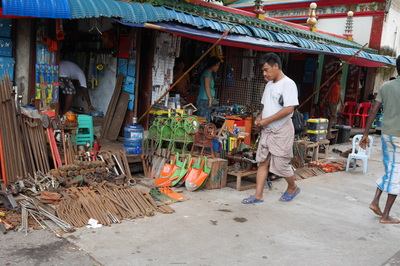
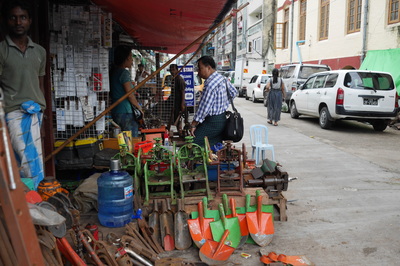
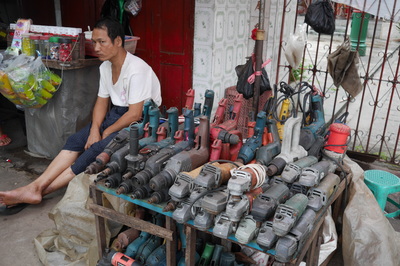
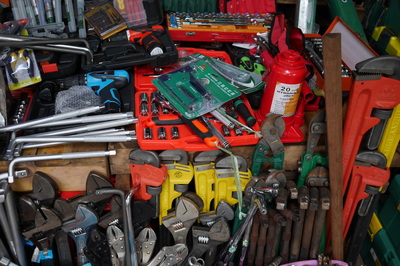
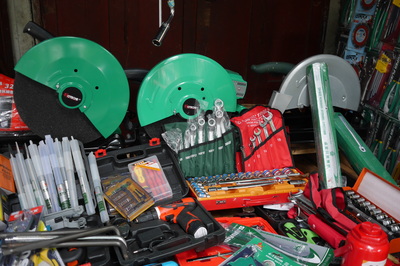
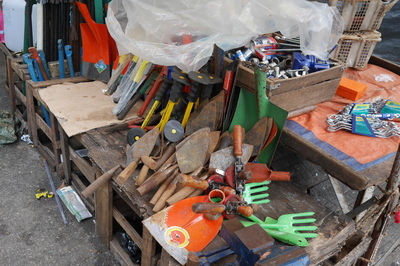
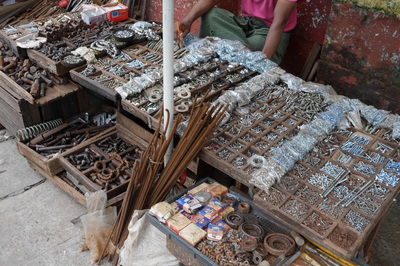
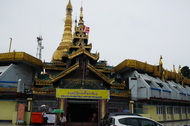
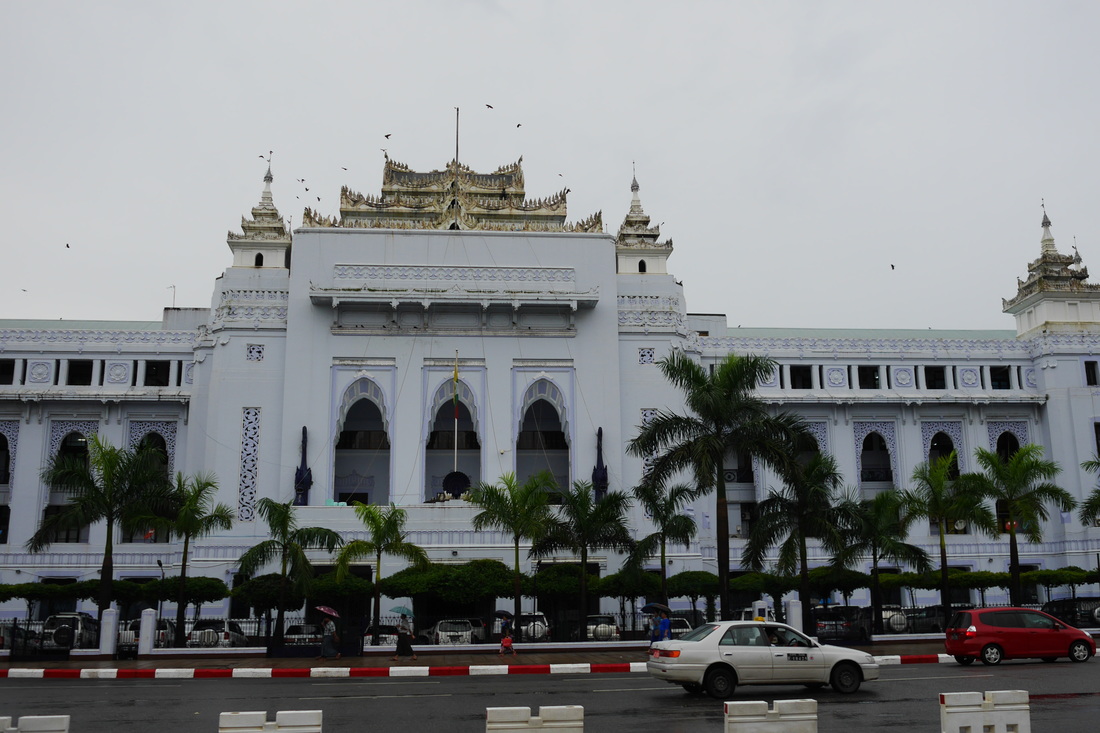

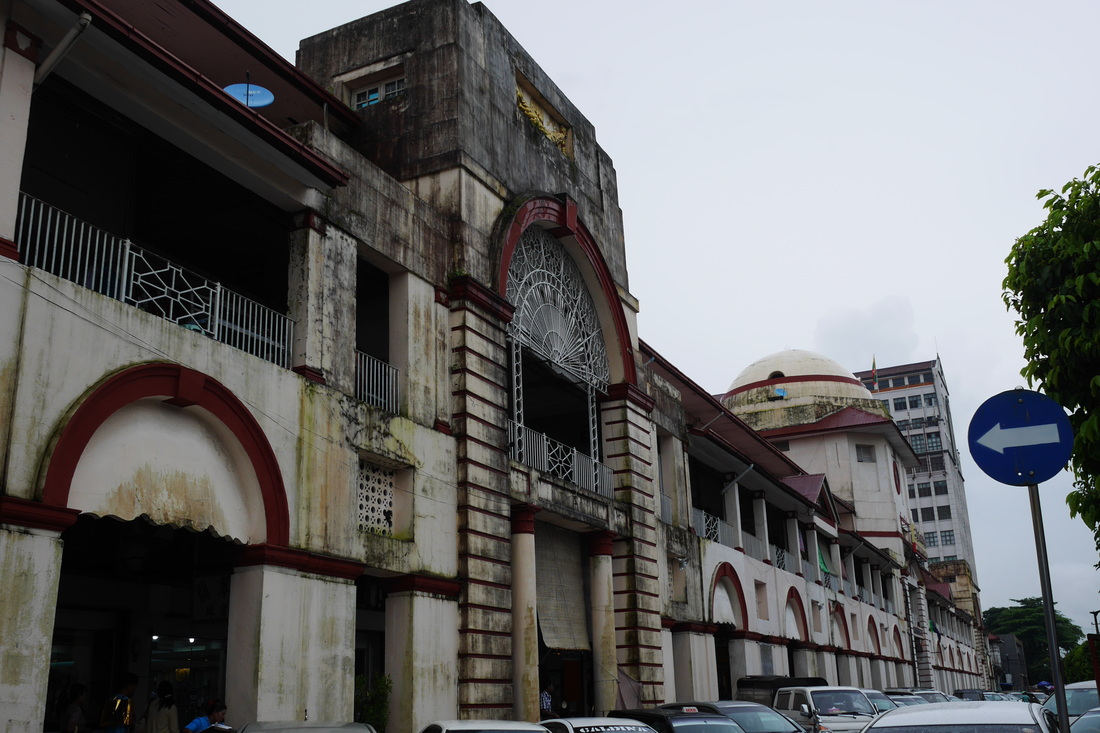
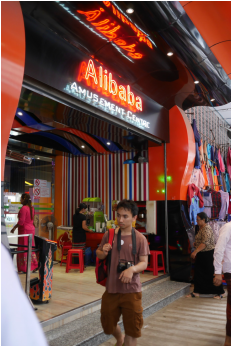
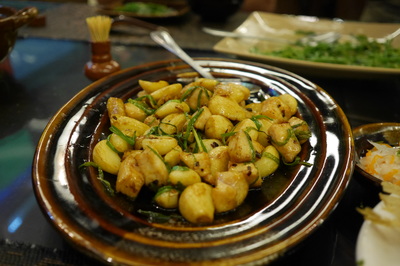
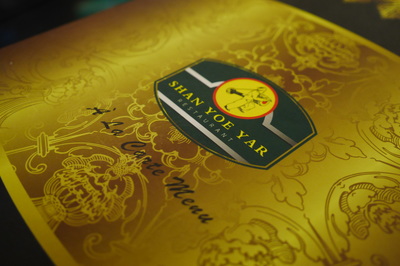
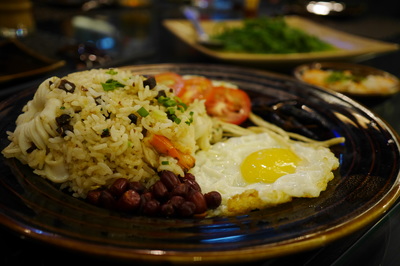
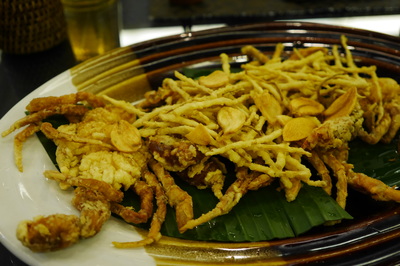
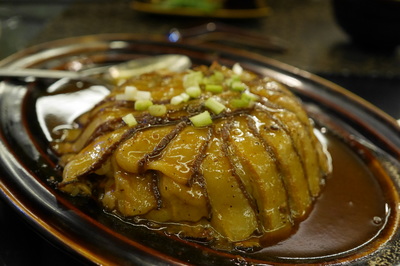
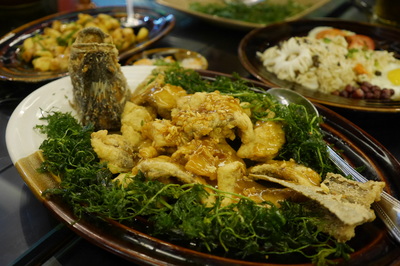
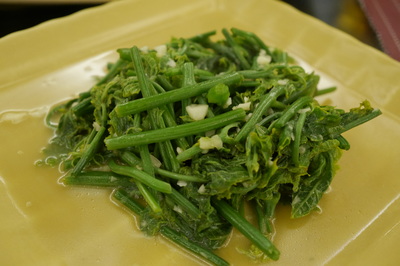
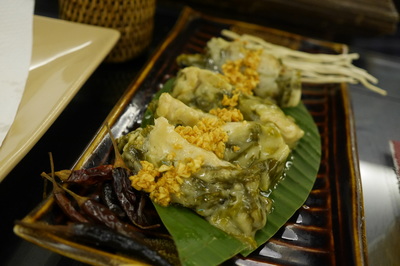

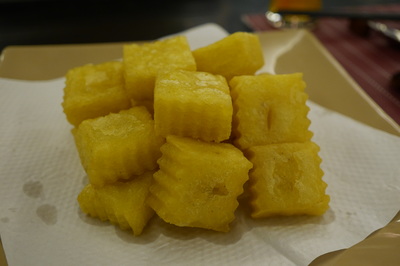
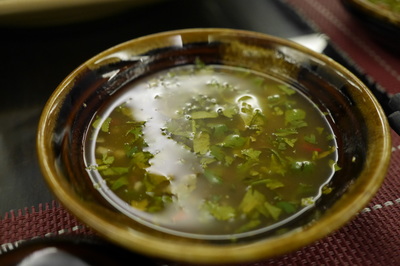
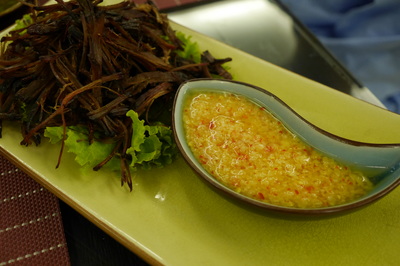
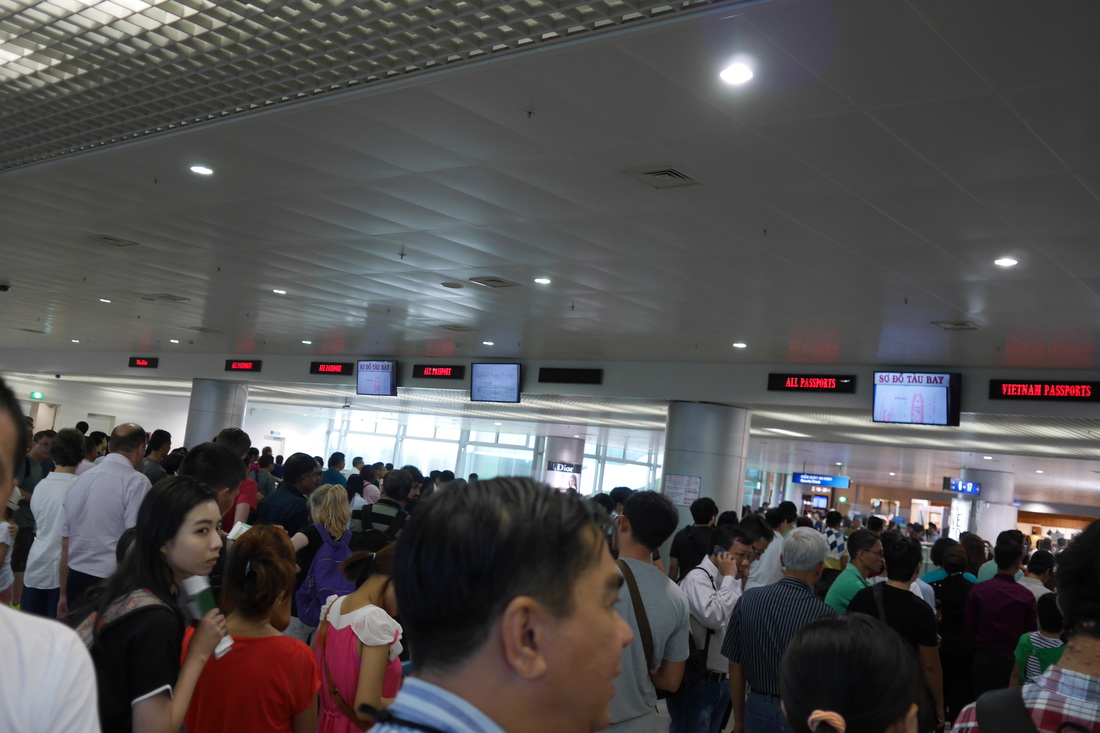
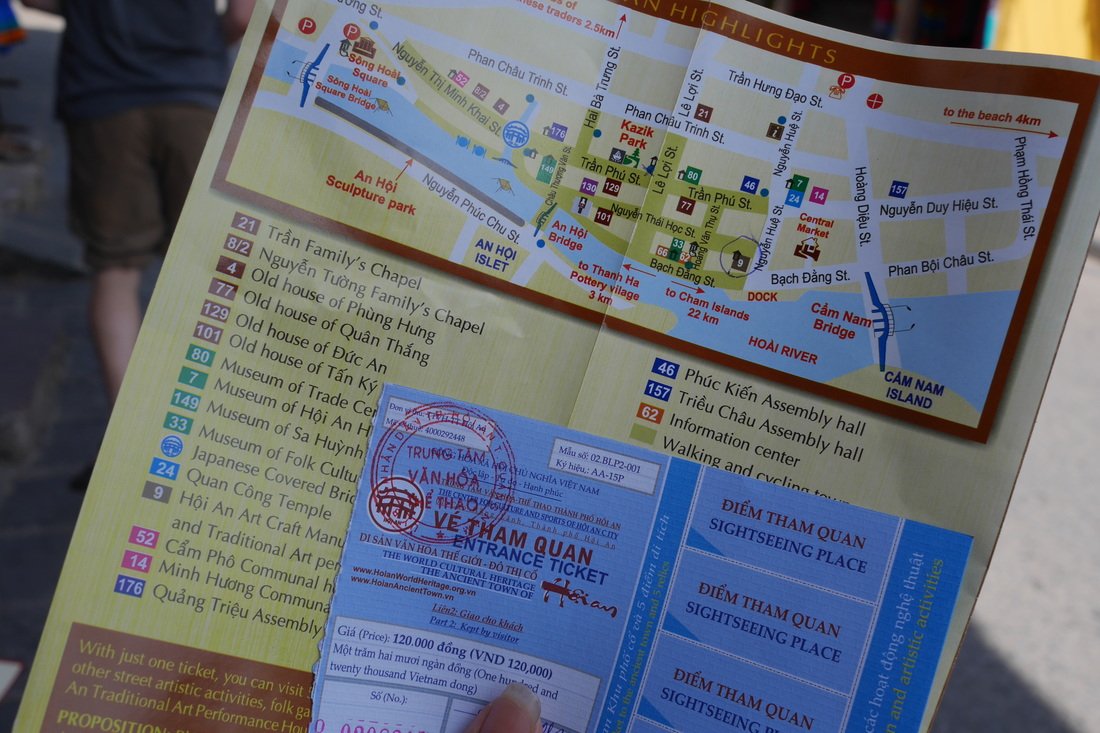
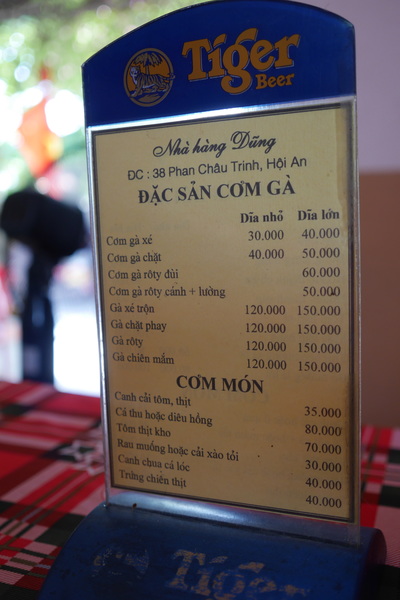
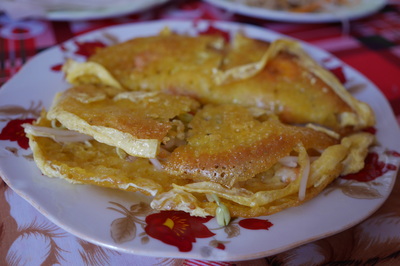
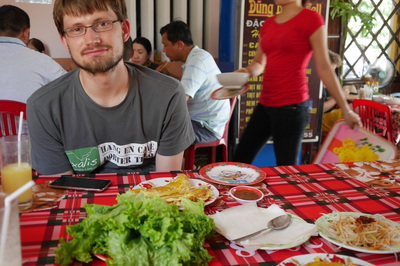
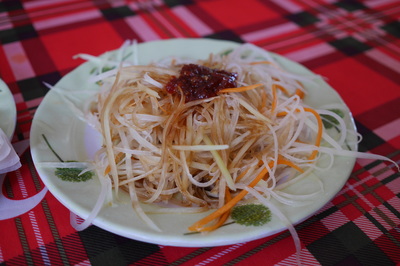
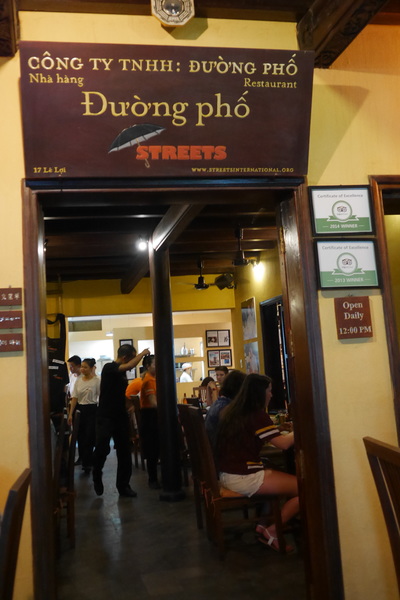
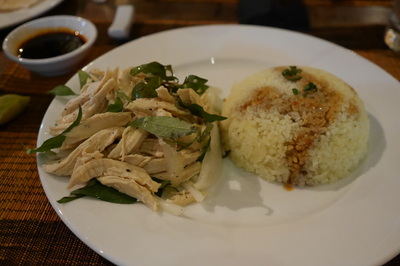
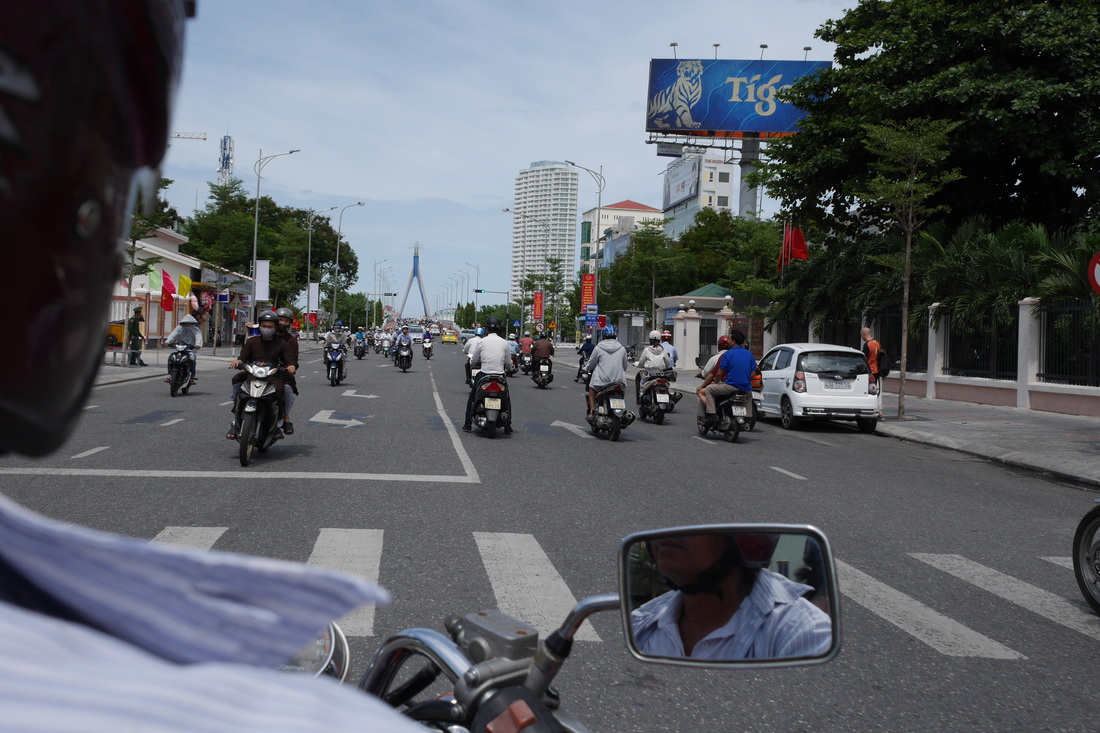
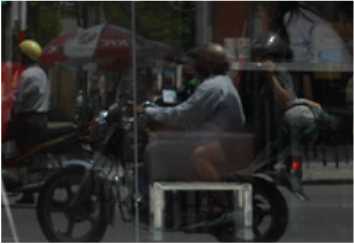
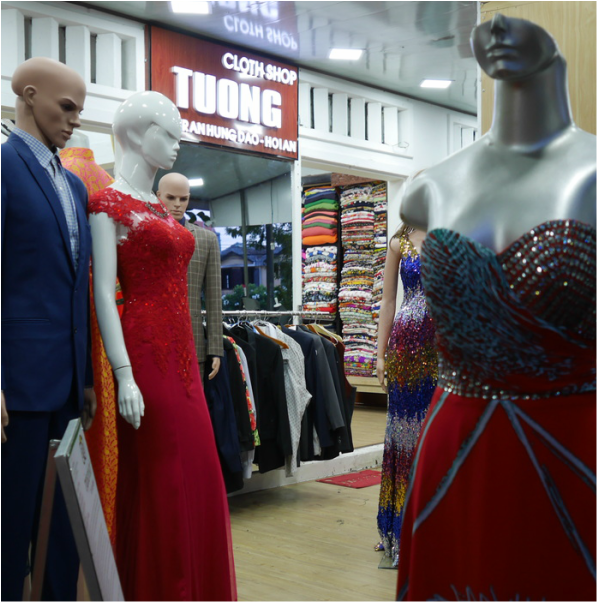

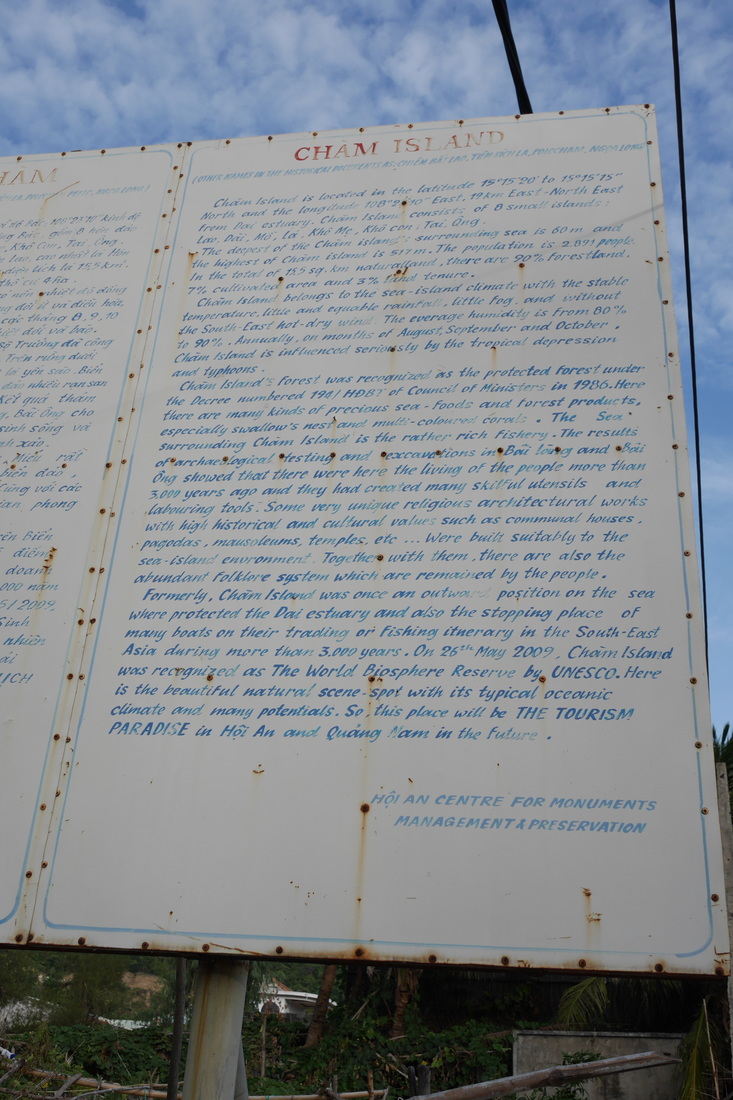
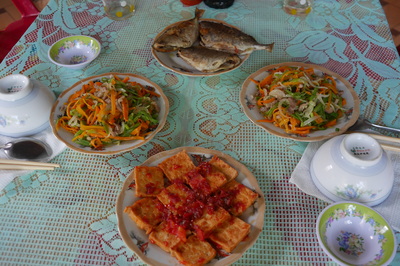
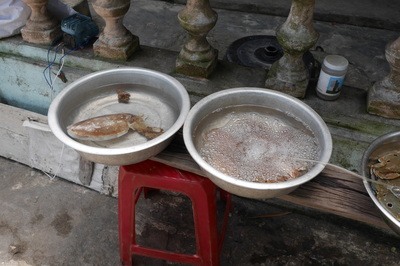
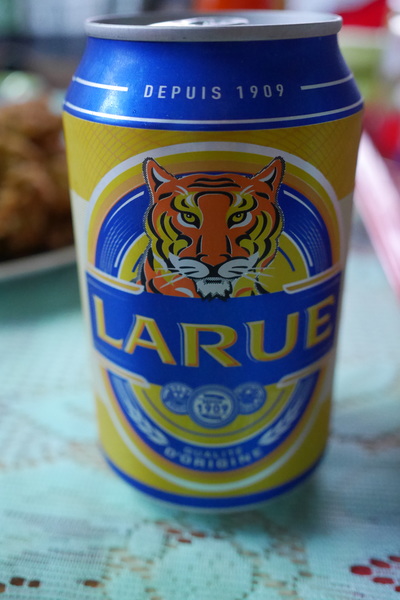
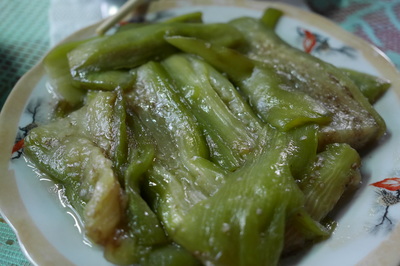
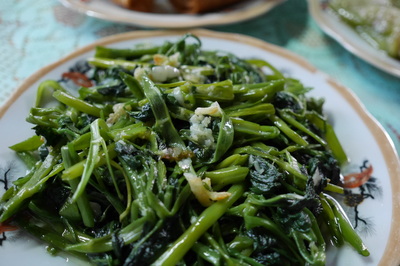
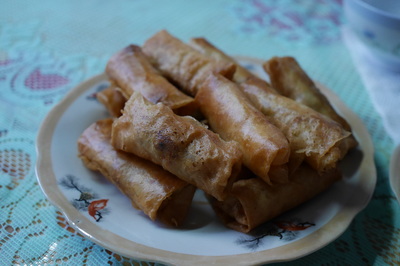
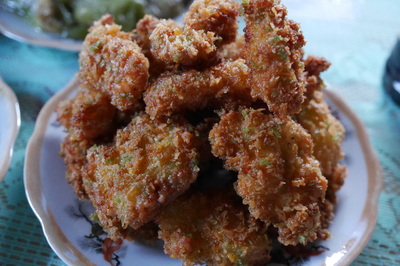
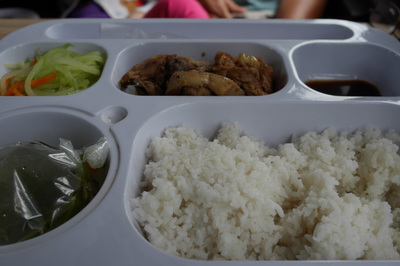
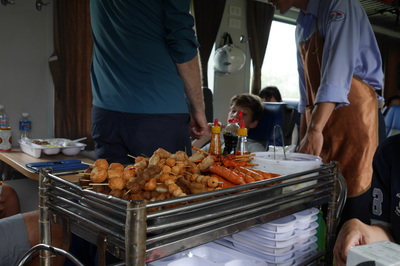
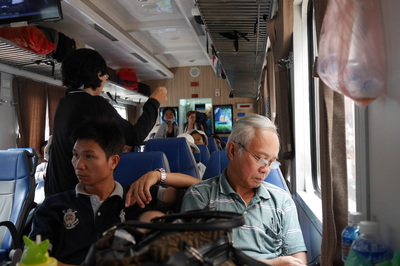
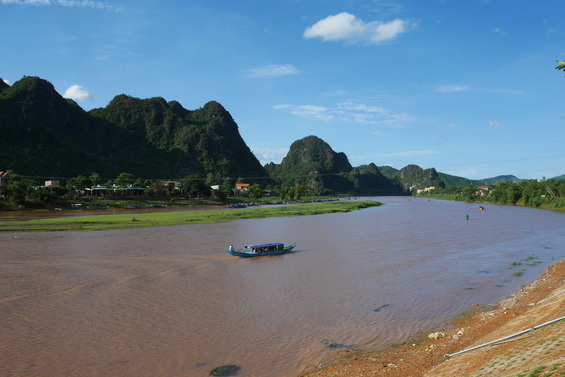
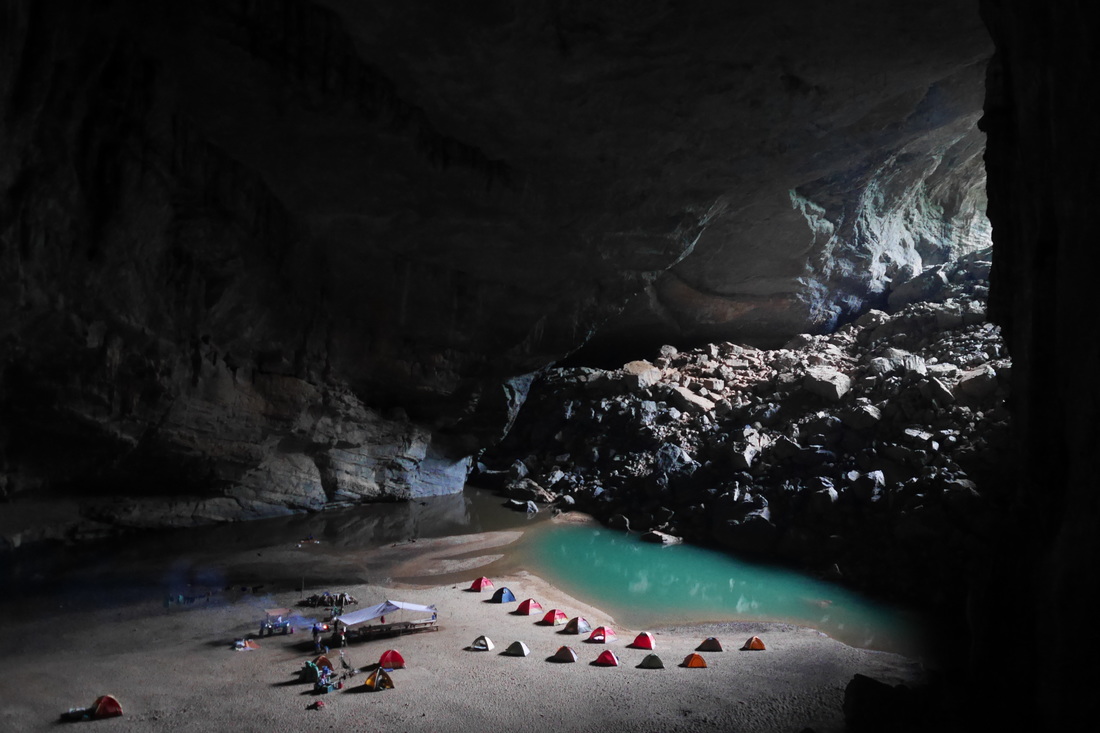
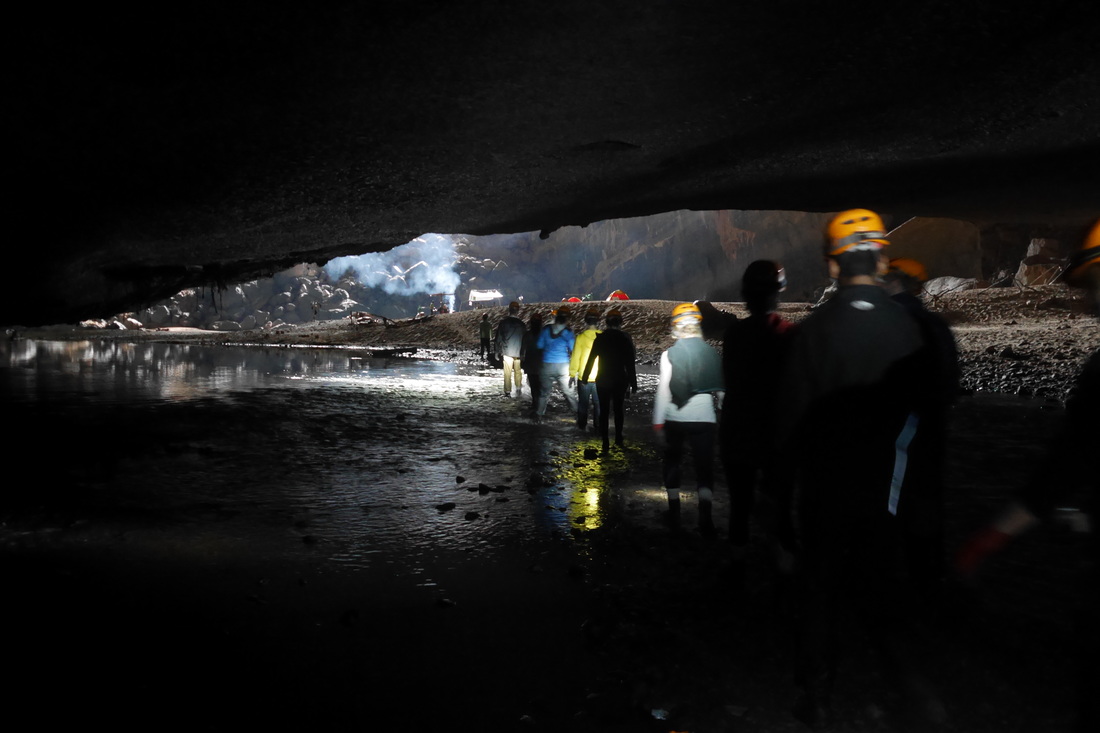
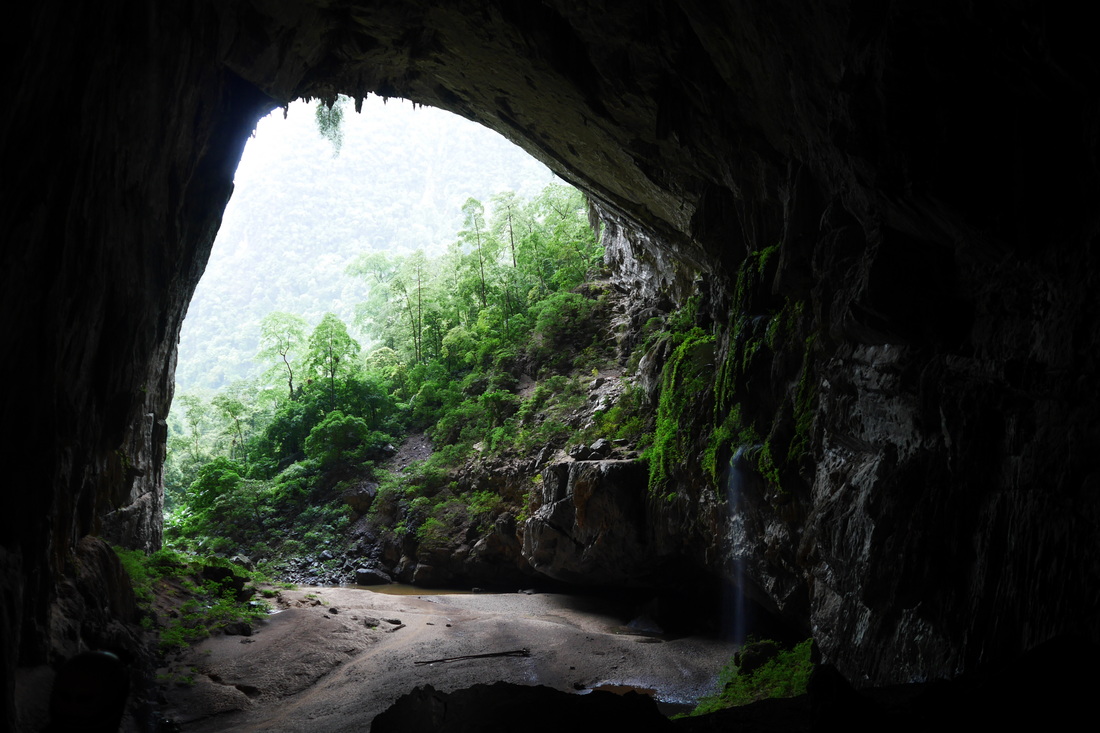
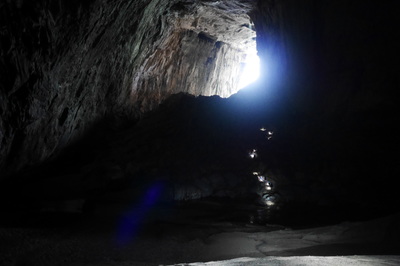
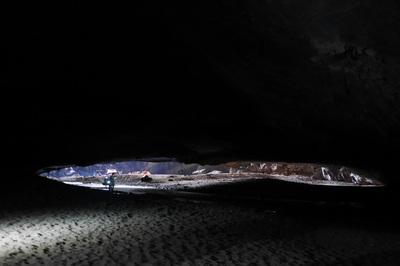
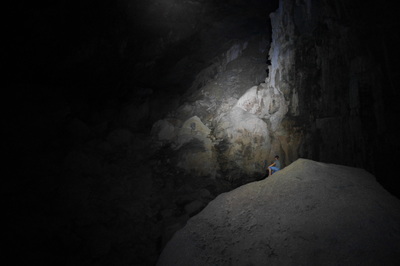
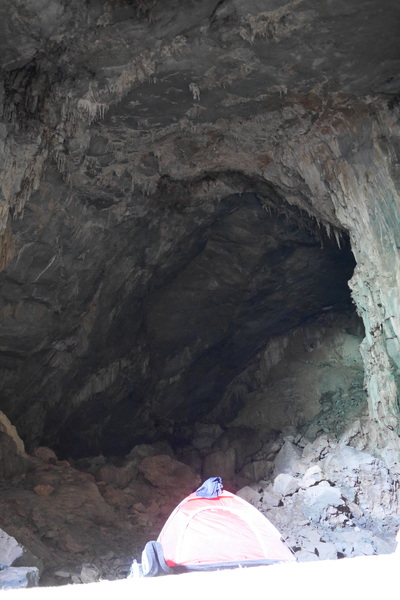
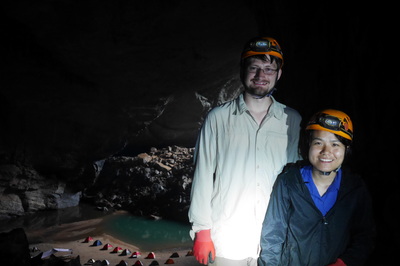
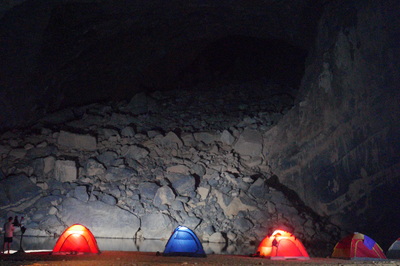
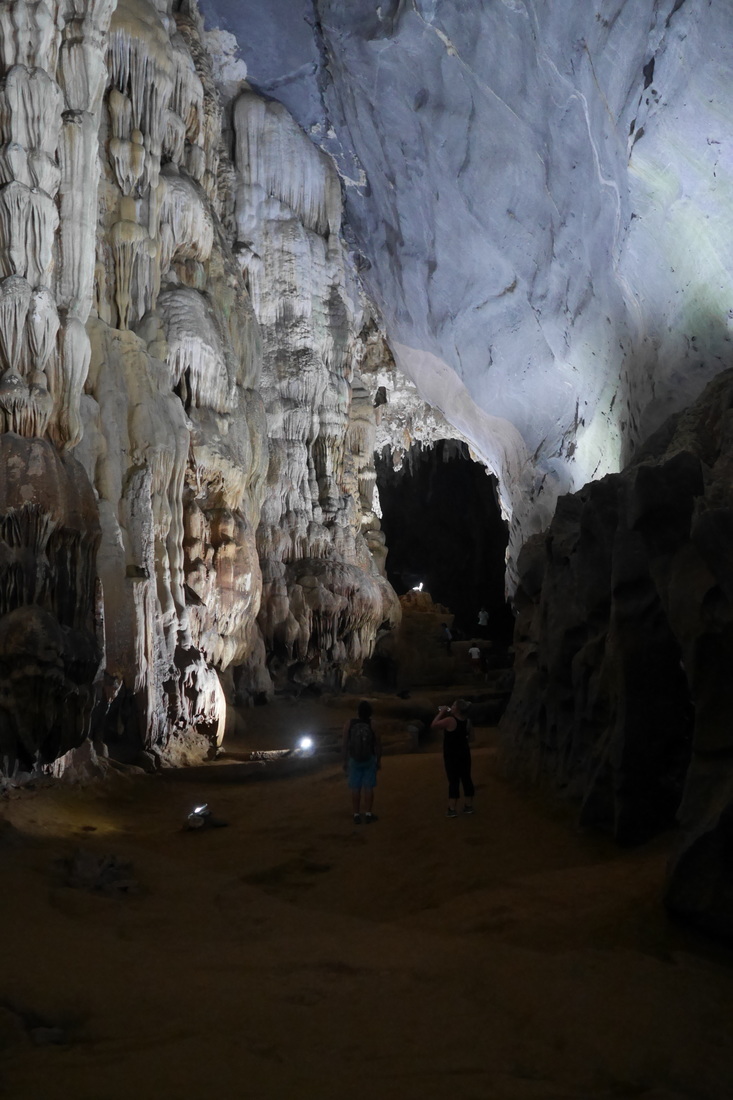
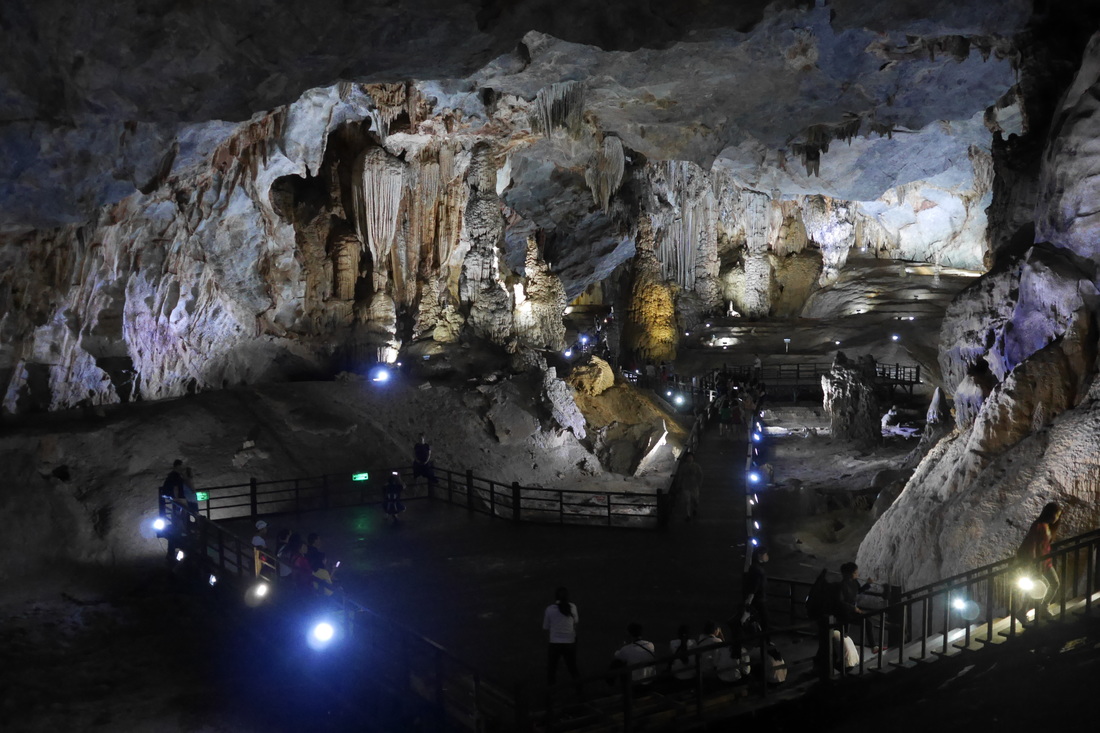
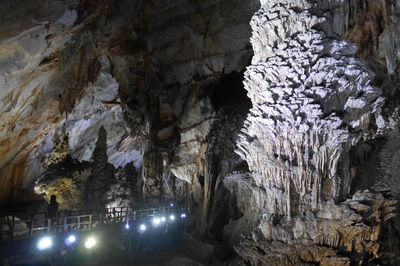
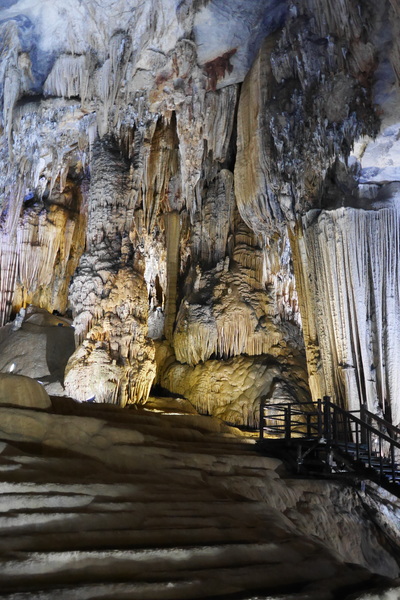
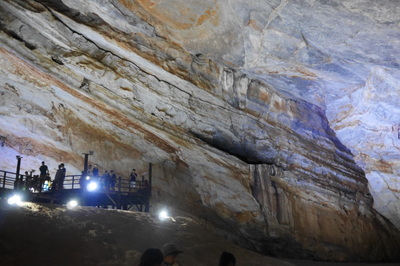
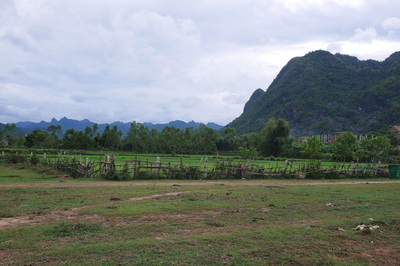
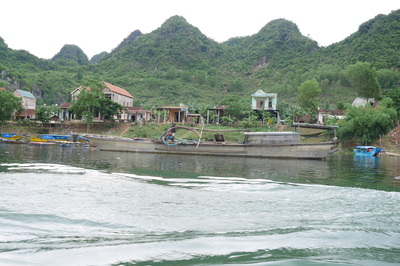
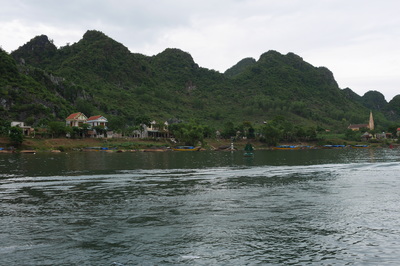
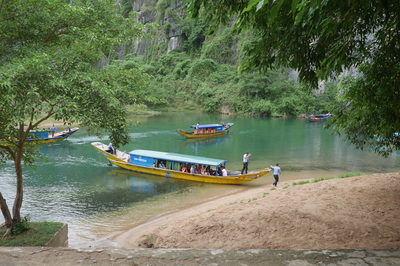
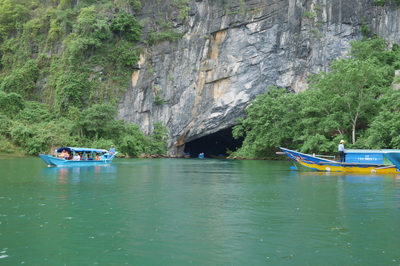
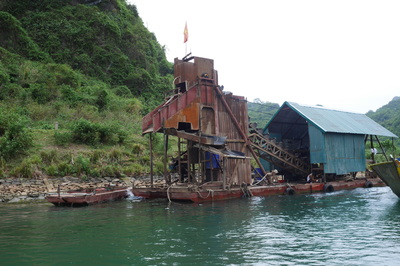
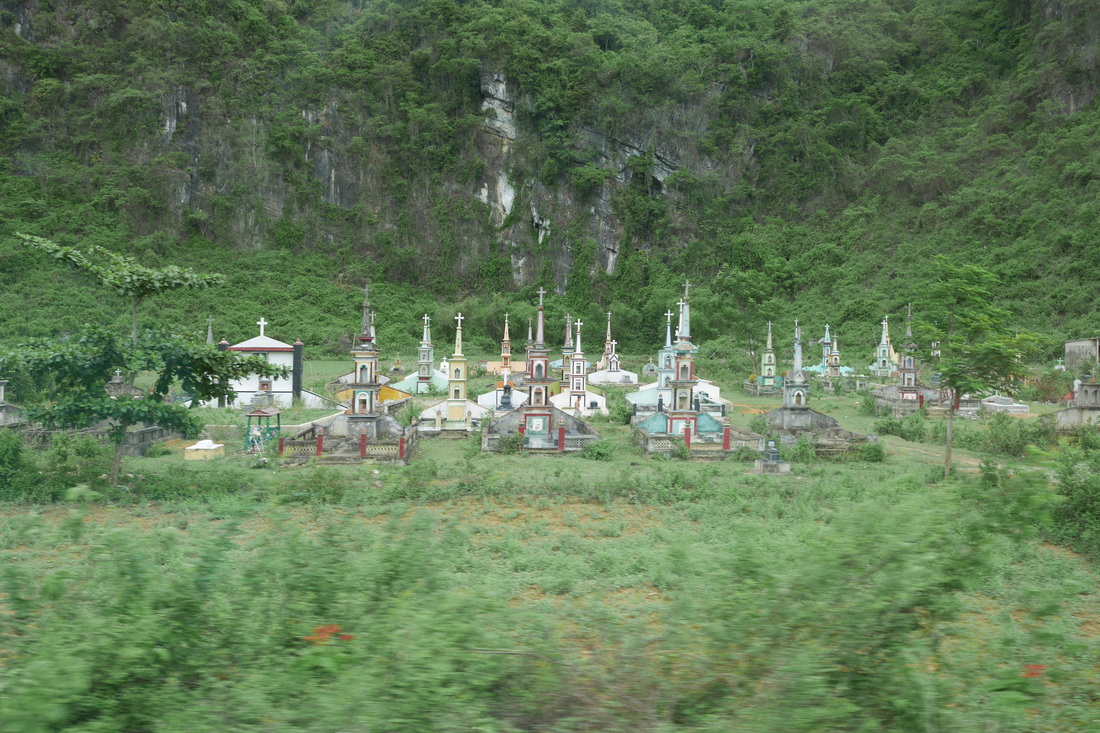
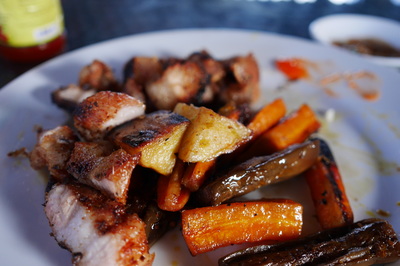
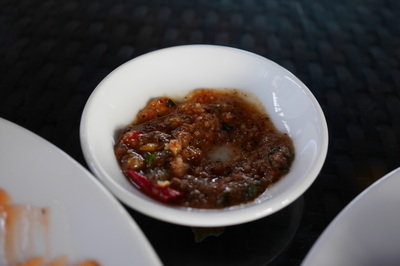
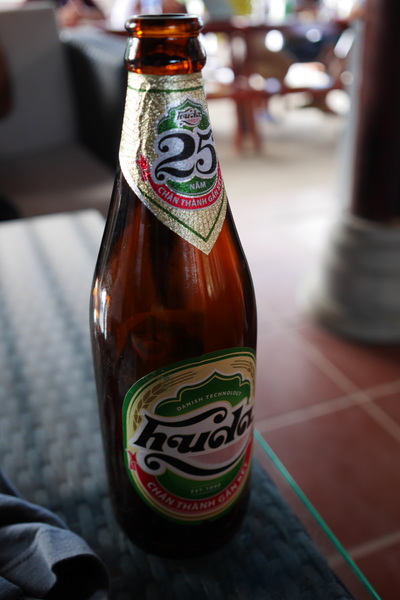
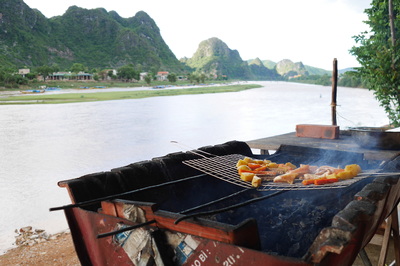
 RSS Feed
RSS Feed
